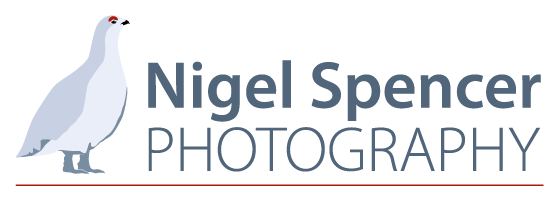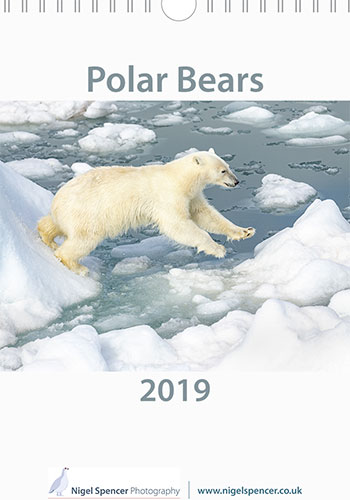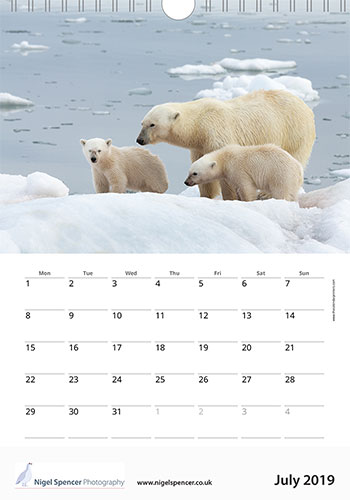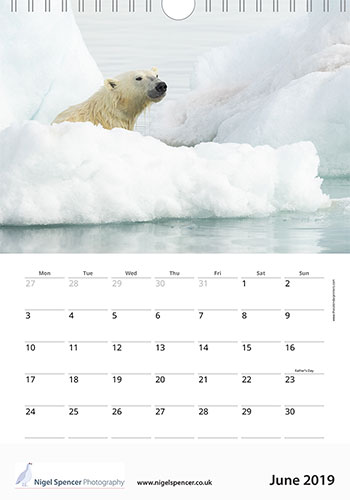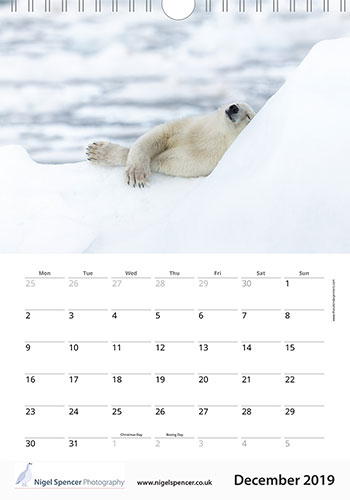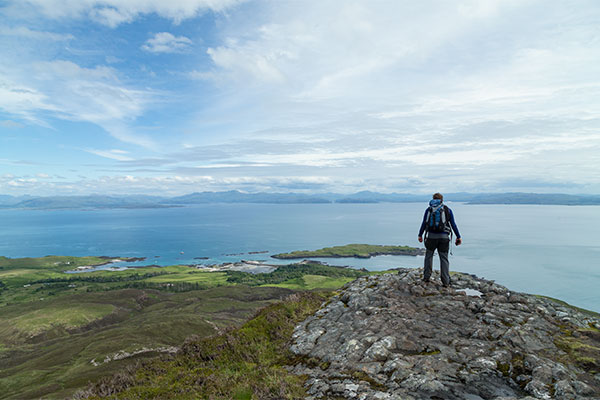| Nigel's Wildlife Photography Blog: 2018 | |||||||||
| Friday 28th December | |||||||||
| Almost Another One Gone | |||||||||
| As we approach the end of another year, I am not sure if this blog becomes repetitive as I find myself writing very similar posts to the previous few years. It is hard to know if a review of the year is a long list of things that have been previously written (and hopefully read) or if it is an interesting summary. | |||||||||
| Without any doubt at all my highlights of 2018 was my trip to the Arctic which had been planned and booked for a couple of years. I had expected it to be good, but there is still that element of surprise and uncertentity regarding what we will see, how near we will get and what the resulting images will be. I certainly should not have worried, the seven-week trip in June and July was certainly one of the best wildlife experiences that I have ever had. The fact that it combined so many things cleared increased the enjoyment, my obvious liking to the wilderness, to the cold Arctic conditions, and travel by boat all had a huge positive effect on the experience. But I guess it is hard to add much more here that has not already been written in my blog below. | |||||||||
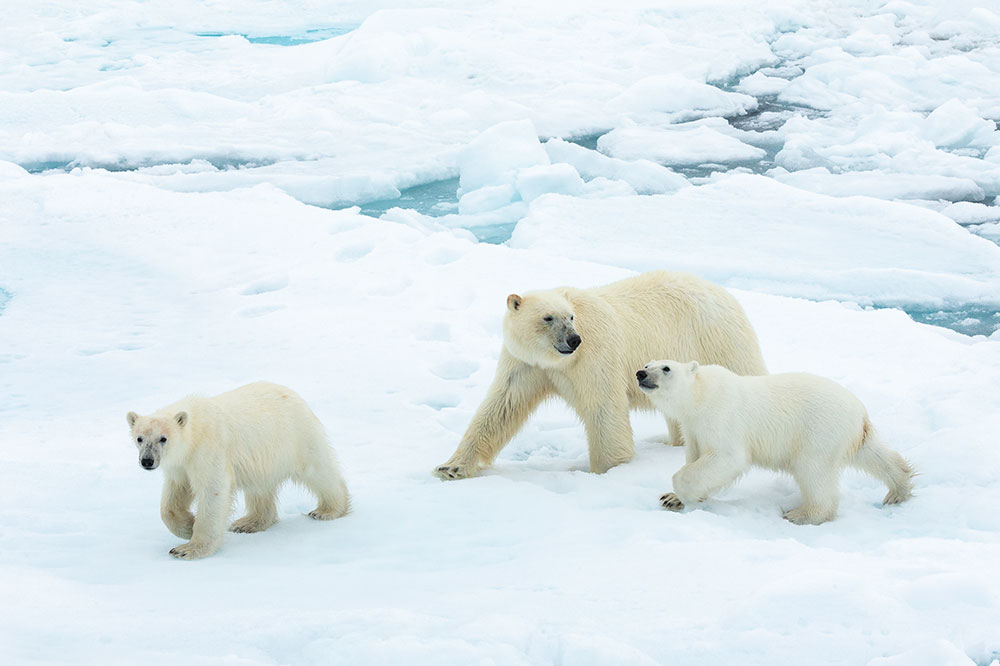 |
|||||||||
|
It is quite hard to choose my favorite image from the trip, but I think this mum walking on the pack ice at 82 degrees north with her two young cubs is definitely up there as one of my favorites. The image below is the one that seems to be the most popular with others has had a lot of likes on social media, also features as one of my new greetings cards and in my calendar is this young bear resting on the ice. it seems to have everyone saying that it is their favorite image in the calendar and is also very popular in my talks. |
|||||||||
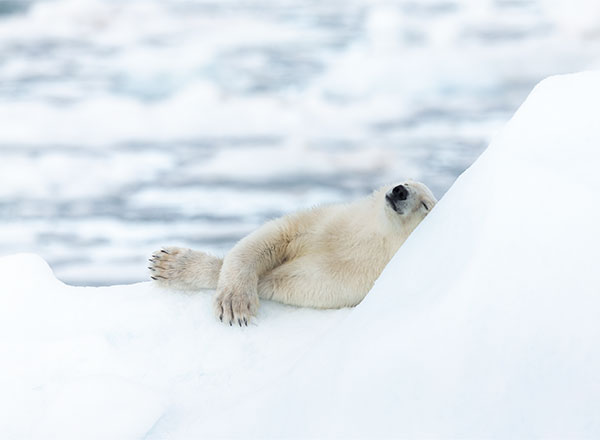 |
|||||||||
|
2018 has been a very "boaty year" for me with over 8000 nautical miles traveled and over 150 nights onboard since mid-April. During this time, I have been to many new islands in the Hebrides such as Ensay and Taransay which become well known and is remembered for being the island used for the documentary series Castaway 2000. I had hoped to return to St Kilda in 2018, but due to the weather conditions it did not happen (but fingers crossed that I manage a return in 2019). But it is also great to be sitting on the boat enjoying the scenery and hopefully some marine life, and again we saw good numbers of dolphins and Minkie Whales during my time in the Hebrides. One of the marine creatures that I have always wanted to see and to photograph is the Orca or Killer Whale as it is sometimes called. During a passage between Canna and Mingulay in September, we managed my first sighting of Orca and everyone on board was very excited. It was a big male with a huge dorsal fin of over two meters. It didn't really show itself well for my camera, but it was still a great sighting and I was pleased to get some reasonable record shots including the one below. |
|||||||||
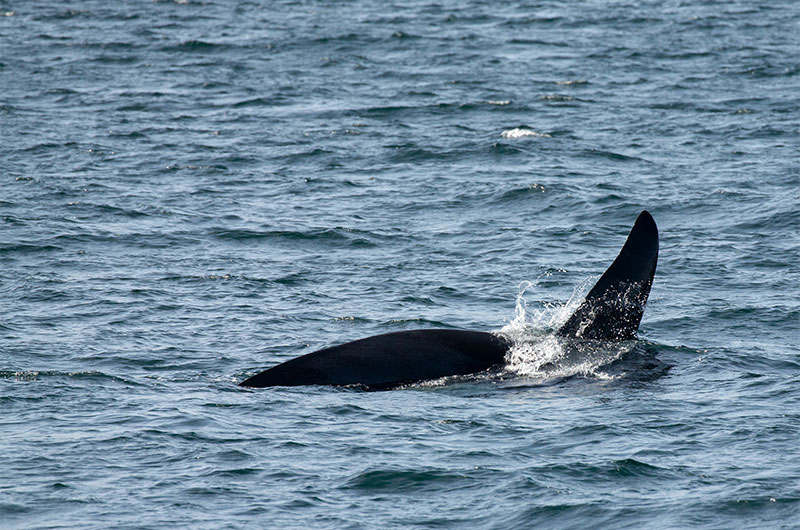 |
|||||||||
| During April a few weeks before my first boat trip of the season, I spent a few days on Harris and Lewis photographing some of the stunning scenery that the Outer Hebrides has to offer. I am pleased with many of the results including some of the beaches and lighthouses, but also this lovely rock arch in Northern Lewis. | |||||||||
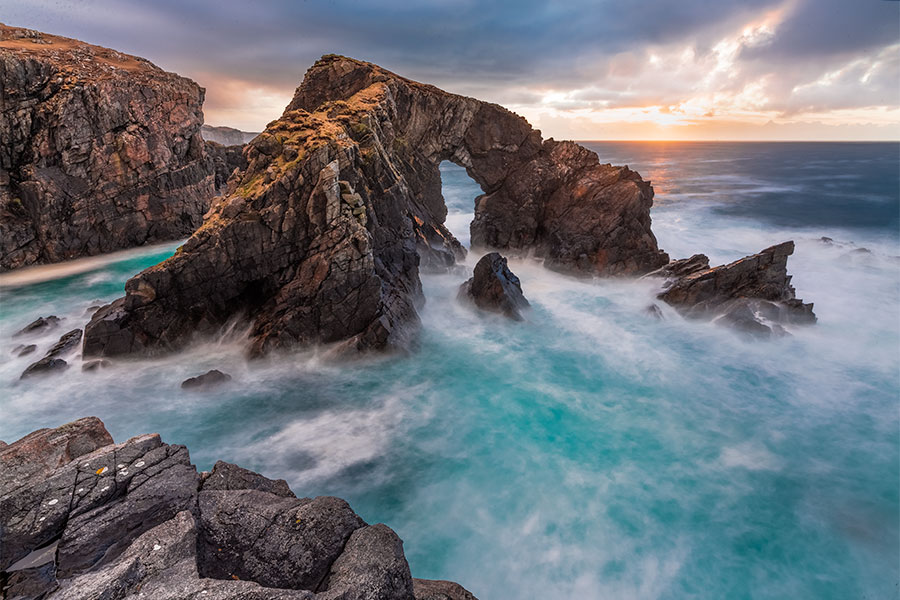 |
|||||||||
| One of the things that have suffered during the year is my macro photography. It is a simple case that I cannot be everywhere that I would like to be and as a result, many of my target British macro subjects will have to wait at least another year before I get the chance to photograph them again. But luckily there have been a small number of exceptions such as my visit to a local butterfly colony to photograph the lovely Black Hairstreak. | |||||||||
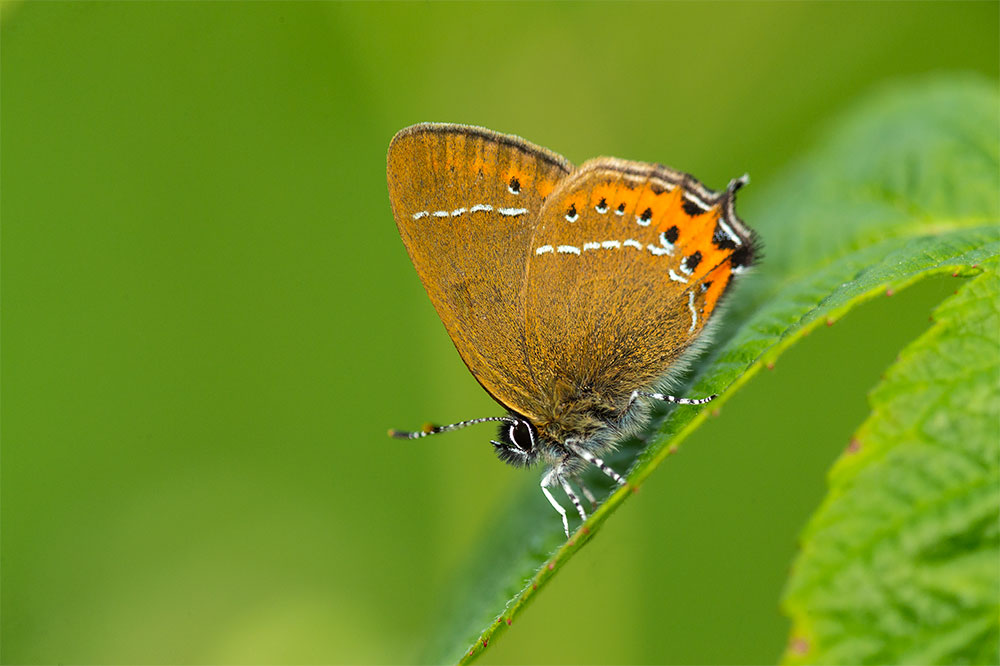 |
|||||||||
| But sometimes a simple portrait is all that is needed to show a lovely subject, and I still remember thinking what a lovely image these wild crocus would make when I saw them in Northamptonshire earlier this year. | |||||||||
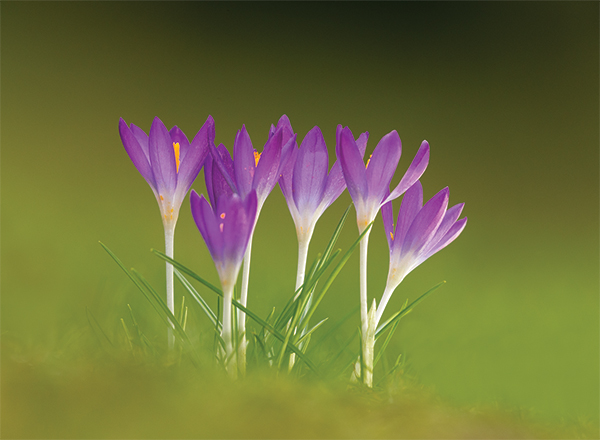 |
|||||||||
| One subject that I have wanted to photograph more was the snowdrop and as a result, I spent quite a few days in the first few weeks of 2019 searching for various sites that gave me the opportunity to photograph this lovely flower and I really enjoyed being out in the cold winter days looking for varied subjects from a single flower spike through to this large woodland carpet which was a truly memorable day with these very small subjects. | |||||||||
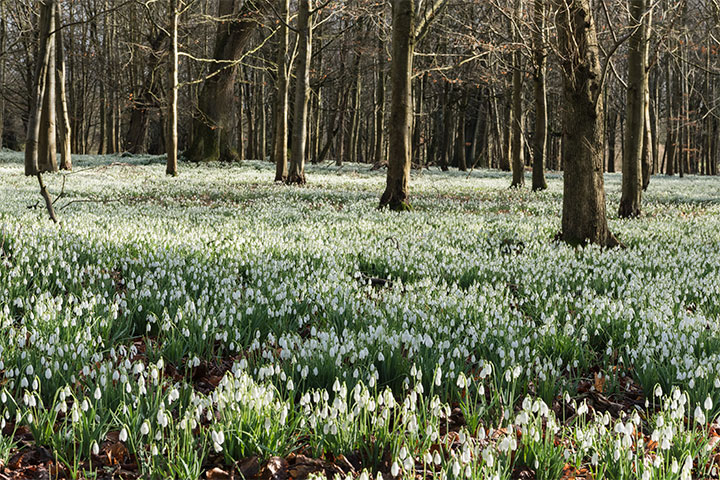 |
|||||||||
|
As I look back, there is no doubt 2018 has been a great year with all sorts of subjects and great experiences. Indeed, the more that I look back, the more I find that it has been a great year and much more than just a fantastic polar bear experience. There are already many plans in place for 2019 (and a few for 2020) so I am already looking forward to seeing how fruitful my end of year blog will be in 12 months time. Not wishing my life away, just really looking forward to hopefully some really good wildlife experiences and journeys in the year ahead. |
|||||||||
|
|
|||||||||
| Thursday 20th December | |||||||||
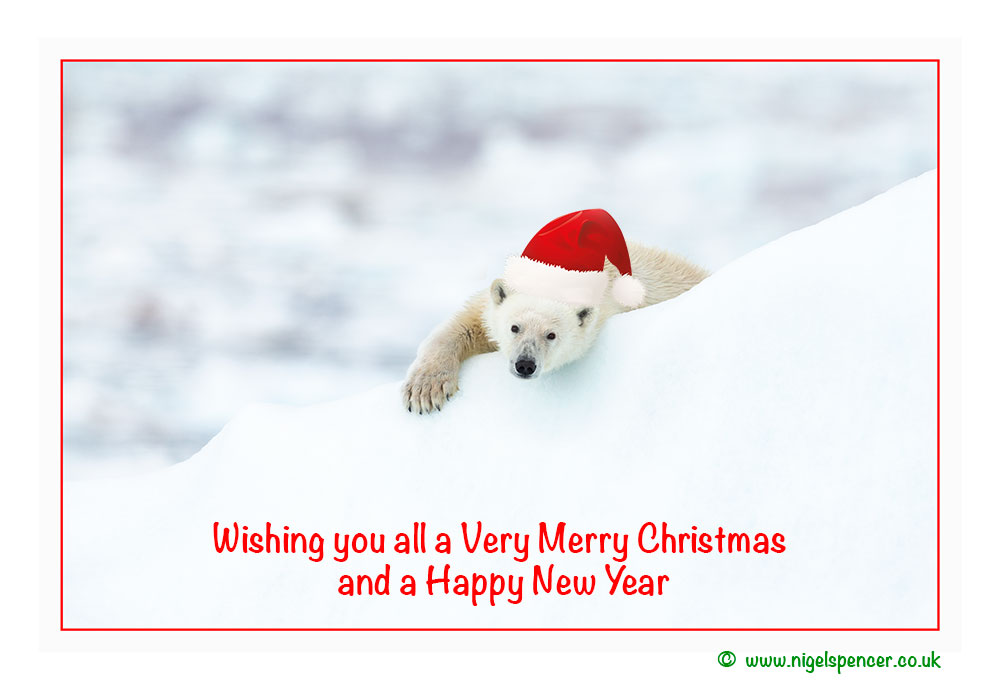 |
|||||||||
| A very big Thank You to everyone who has supported my photography during the past year (and beyond). | |||||||||
| I would like to take this opportunity to wish you all the very best for the forthcoming festive period. | |||||||||
|
|
|||||||||
| Tuesday 18th December | |||||||||
| Not Just Bears | |||||||||
|
My highlight of 2019 in terms of photography, sightings, travel, and wildlife experiences was 100% the sighting of over 100 Polar Bears during my Svalbard expedition in June & July. But the trip was so much more than Polar Bears, although, as a visitor to my blog, you would be forgiven for thinking 2018 was just bears. One of the many species that we saw and photographed were Barnacle Geese. The Svalbard population of barnacle geese spend their summer months on the tundra where they breed and enjoy the relative warmth of an Arctic summer. But during the winter months, the Svalbard population of barnacle geese migrate south to the Solway Firth. They are one of the smaller species of geese and are quite shy. We were pleased to see them on several occasions during the summer, but they were mostly out of camera range. I did, however, manage to get a few images including this particular reflection shot which I am pleased with. |
|||||||||
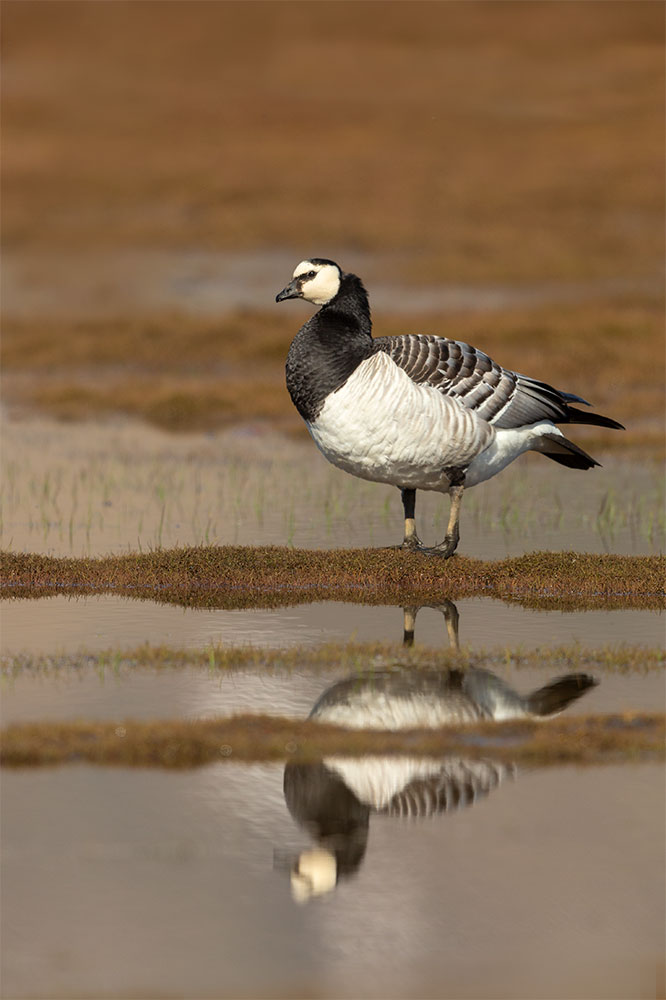 |
|||||||||
|
|
|||||||||
| Saturday 1st December | |||||||||
| A Polar Bear For Every Day In 2019 | |||||||||
|
A few Years ago, when updating my blog with my calendar details, I wrote But when each year, I choose the design and then produce a set of images to be part of my calendar for the year ahead, there is always the realisation that the nights have already drawn in, and the next year is just around the corner. I always say I have left it too late, and that I will start earlier the following year. Well in 2018, I have left it later than I should, but it has all worked out and I am now in possession of my 2019 calendars.
Most of these 2019 calendars are reserved for presents, already been sold, or are already on their way to their home for the next twelve months. But a small number remain, if there are any readers of this blog who would like to purchase my 2019 calendar, then please get in touch. Please use facebook messenger, send me a text or email. Or even direct from this website using the following link: |
|||||||||
|
|||||||||
|
|
|||||||||
| Sunday 25th November | |||||||||
| Pleased To Report Silver For Arctic Fox | |||||||||
|
A few years ago, I used to enter a lot of external photography competitions, but in 2018, I have not entered any at all, my excuse is that I have been very busy and not had the time to enter any. In my opinion, the Smethwick Photographic Society International exhibition is the best of all of the competitions that are run by an individual camera club, so I decided that this would be the only exhibition that I would enter in 2018. Over the years, I have been fortunate and have done very well in the Smethwick international. I received my first Smethwick medal back in 2011. In 2014, I had a really amazing year and was awarded three medals in the 44th Smethwick International. Since then a few more were achieved over the past few years. I was therefore thrilled when I received my 2018 results notification. My image of an Arctic Fox scored 15 / 15. It was also awarded a silver medal. This is the fifth year running that I have managed to achieve a medal at Smethwick, and am obviously very grateful to the judges for this run of luck. Not sure how many competitions that I will enter in 2019, but I am hoping to try my luck again at Smethwick. |
|||||||||
.jpg) |
|||||||||
|
|
|||||||||
| Friday 16th November | |||||||||
| A Popular Bear | |||||||||
|
It is always good when my images are sold for commercial use. It doesn't happen as often as I would like, (but I guess that is the case with all photographers.) When it does happen, I generally don't report it anyway. But this lovely young bear has been receiving a bit of interest recently. He has featured on my latest run of greetings cards, and he also features as one of the images in my 2019 calendar. Indeed, he is a lovely bear, and he usually gets an "awwww" comment from the audience when this picture is shown at my talks. But I am now pleased to report that a local Leicestershire company has purchased a copy of his image for their 2018 Christmas card. |
|||||||||
 |
|||||||||
|
|
|||||||||
| Monday 12th November | |||||||||
| Wildlife Greetings Cards | |||||||||
|
Over the past few years, I have been selling greetings cards at various events and talks, and every now and then, I add new card designs and have some replacement cards printed. In the run up to the festive season, I have booked myself a few stalls at local craft fairs and Christmas events hoping to sell a few of these cards. To ensure my stock is fresh, I thought it was a good opportunity to spend a few hours adding a few new designs to the various greetings cards that I offer. The dozen images below are all either recent additions or reprinted cards where stocks were low. |
|||||||||
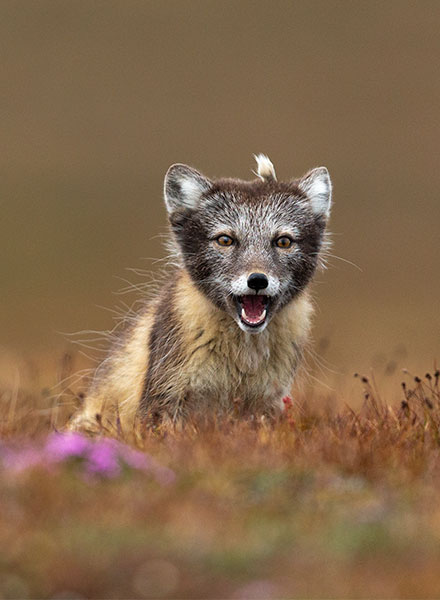 |
|||||||||
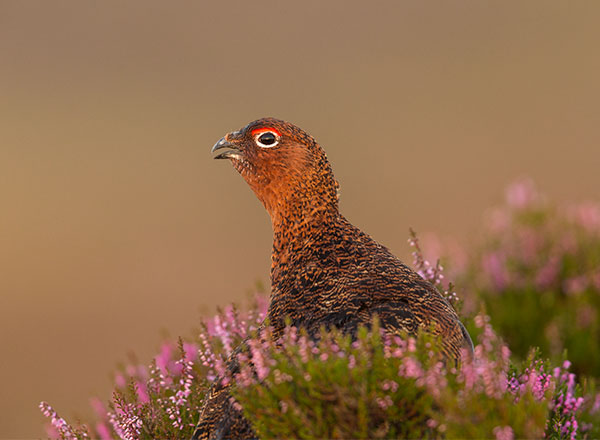 |
|||||||||
 |
|||||||||
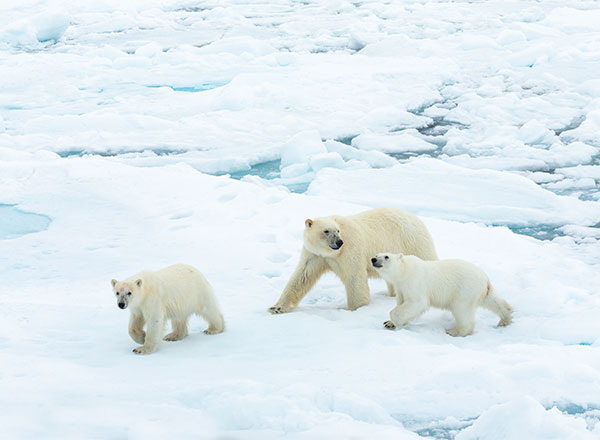 |
|||||||||
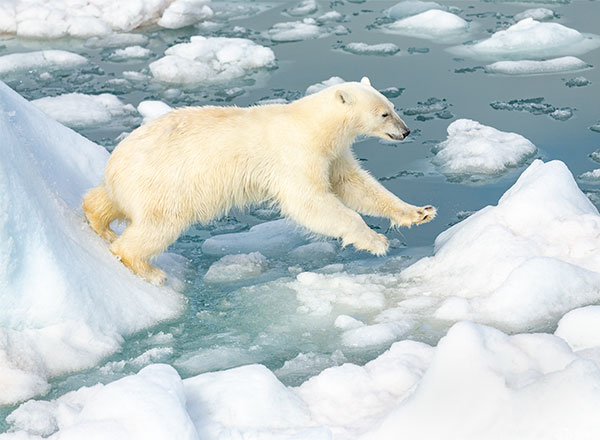 |
|||||||||
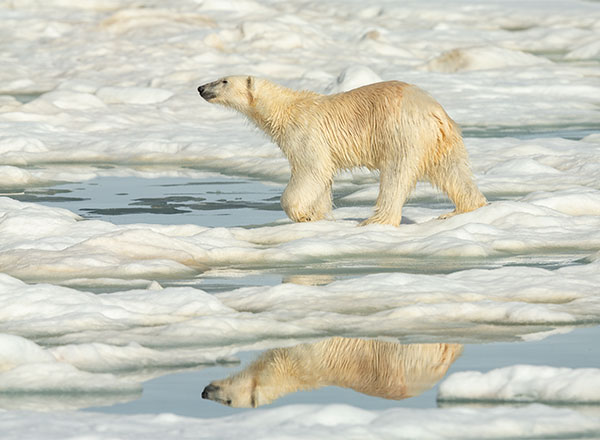 |
|||||||||
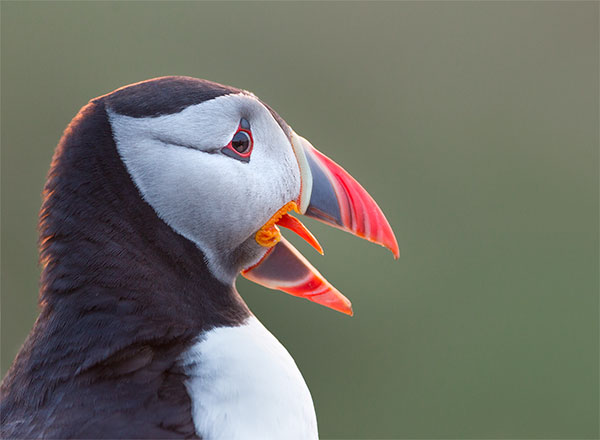 |
|||||||||
 |
|||||||||
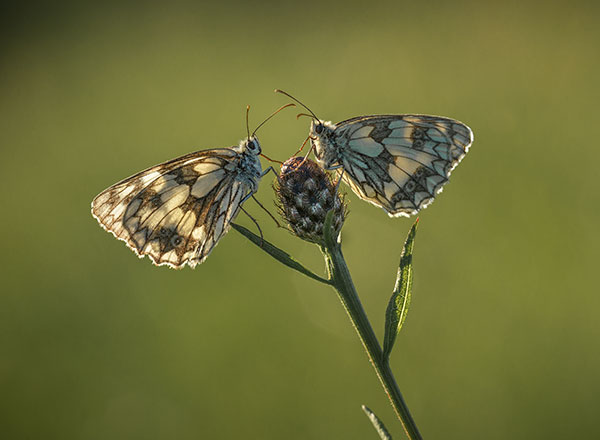 |
|||||||||
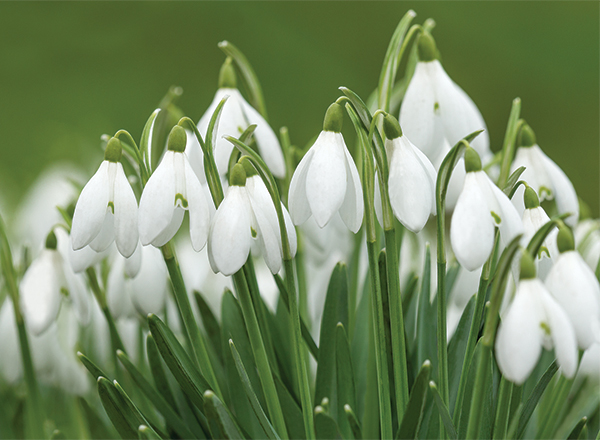 |
|||||||||
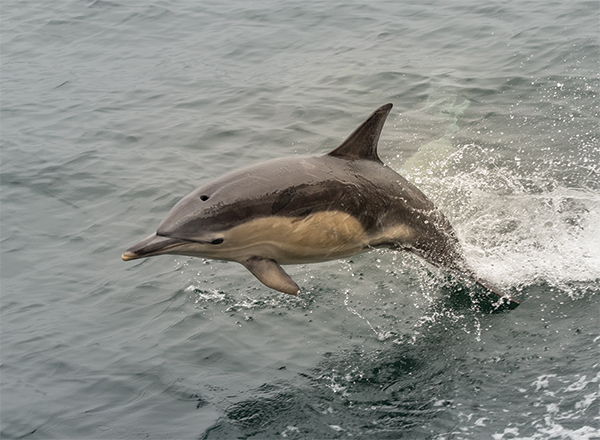 |
|||||||||
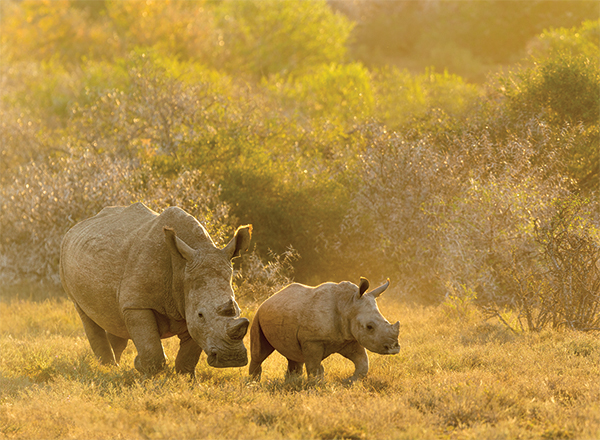 |
|||||||||
|
With the above additional cards and my existing cards, I now have over 40 designs of Greetings cards available to purchase. Obviously hoping a few will sell in the near future. Please take a look at my "Sales" page for more details, and please contact me if you wish to purchase. Trade orders are welcome |
|||||||||
|
|
|||||||||
| Thursday 8th November | |||||||||
| It Is always A Good Feeling To Recieve Positive Feedback | |||||||||
|
There are many reasons why I show my images in the form of illustrated audiovisual shows to photographic societies, wildlife groups, women's institutes, and various other groups. One of these reasons is the fact that a lot of time, money, and effort is invested into getting the images onto my memory cards and then more effort is taken processing these images into the final results that are seen here and on social media such as Facebook. But then what happens to them? As with all talks, some are received better than others, and I am always tweaking my talks trying to improve them. This has resulted in some very positive comments on social media, at the talks themselves, and in feedback afterward. I was delighted to receive the following feedback from a local photographic club after just the second showing of my new talk "Journey To The Arctic" |
|||||||||
|
Hi Nigel,
Just a word to say thanks once again for your brilliant talk on Thursday. As always your images are superb and your commentary thoughtful and supportive of your images.
It was an inspirational evening for anyone who loves travel, nature, and photography so for me it had everything.
Hopefully, I and others will follow in your footsteps to see at first hand such wonderful things.
Best wishes
John
|
|||||||||
| Below is two of the images from my "Journey To The Arctic" talk, that I have not previously posted onto this blog. | |||||||||
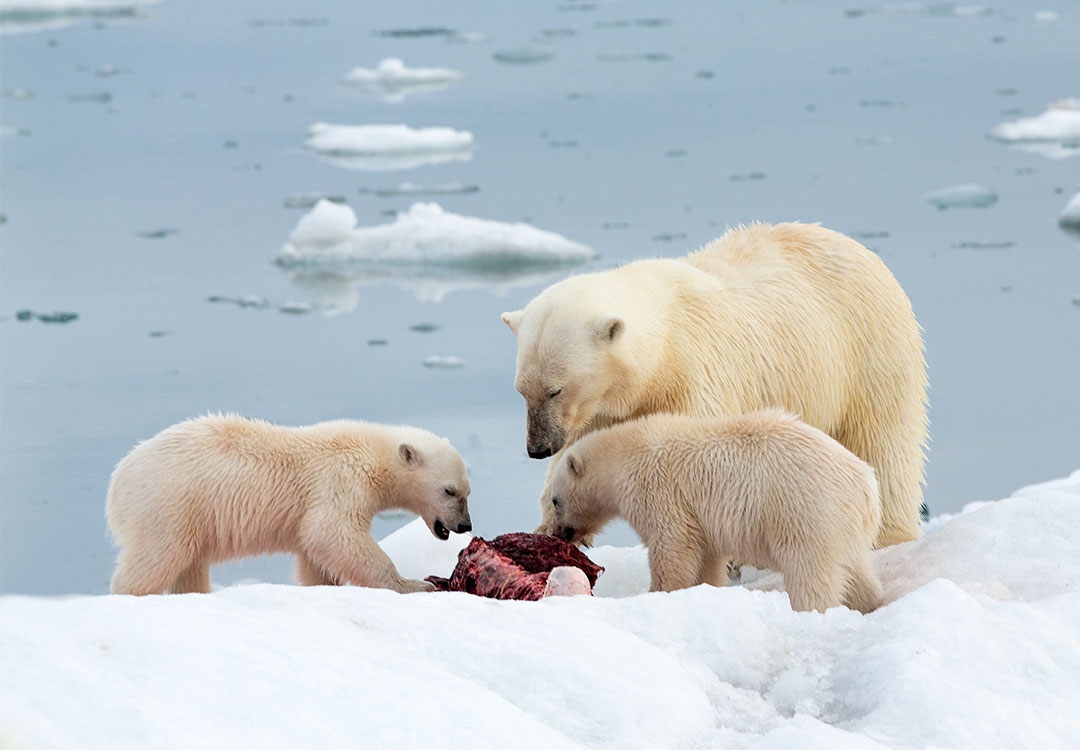 |
|||||||||
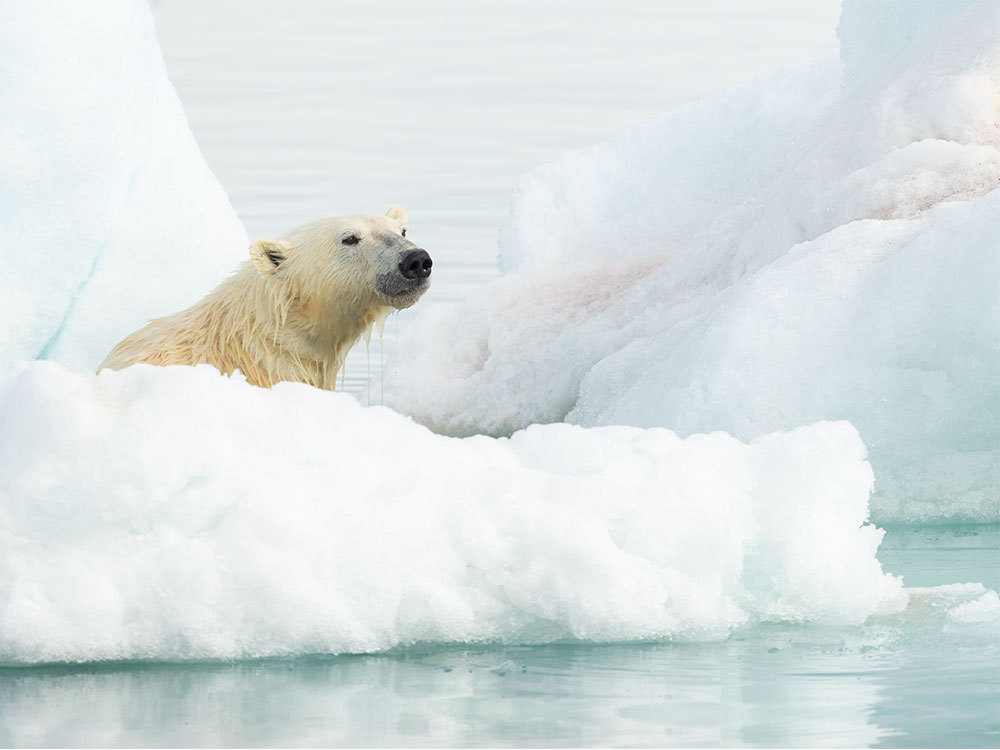 |
|||||||||
|
|
|||||||||
| Tuesday 30th October | |||||||||
| "Blue Chip Species" | |||||||||
|
It is easy to decide what to point your camera at, after all, there are so many hundreds of subjects to choose from, there is definitely something for everyone. The choice is always going to limited by many factors, the obvious ones are time and money. But, Personally, I like to try and create photographs that are a bit different. If I am in either a woodland or meadow looking for flowers or butterflies, then this is reasonably easy as I hope to end up with images that are unique to me. Having an end result that is different to other people is always good no matter what the subject is. The same is obviously true when photographing from a boat, although the number of people on the boat is often higher, it is still fairly easy to end up with something different. But sooner or later, you will want to end up photographing some of the same species as everyone else. This obviously includes some lovely British species such as foxes, hares, barn owls, kingfishers, to name a few. Further afield it includes the African big five, tigers, penguins. These are only a very small list of the many subjects that many people hunt point their cameras at, which results in many of these subjects being regularly seen on social media. Indeed man people call these the so called "Wildlife Photography Blue Chip Species" Indeed it would be very wrong to say I avoid these species, and over the years, I have enjoyed photographing many of them. There is a reason why these species are popular and I would love to photograph many more of these blue chip species. Over many years I have wanted to photograph many species and my list includes a fair number all of the species listed above along with many less well known subjects. Earlier this year, it was really fantastic to then get the opportunity to photograph so many Polar Bears in Svalbard, these are undoubtedly Polar bears are high on any list of the main blue chip species in terms of exciting and rewarding wildlife photography. Although I was fortunate to see and photograph them in Churchill a few years ago, I always wanted to visit Svalbard and photograph them from a boat, and am really pleased that I took the opportunity to venture north to the Arctic. When I return home from a photographic trip, I usually process my images reasonably quickly, they are then used for a number of different purposes which include uploading onto my website here and onto other social media platforms. Some also end up being used in various talks and a small number will end up in my calendar or on my greetings cards. After returning from this year's visit to Svalbard, I have processed over 250 images. This was partly due to the fact that I had quite a small window between my return home, my work in the Hebrides, and the production of my new talk "Journey To The Arctic". |
|||||||||
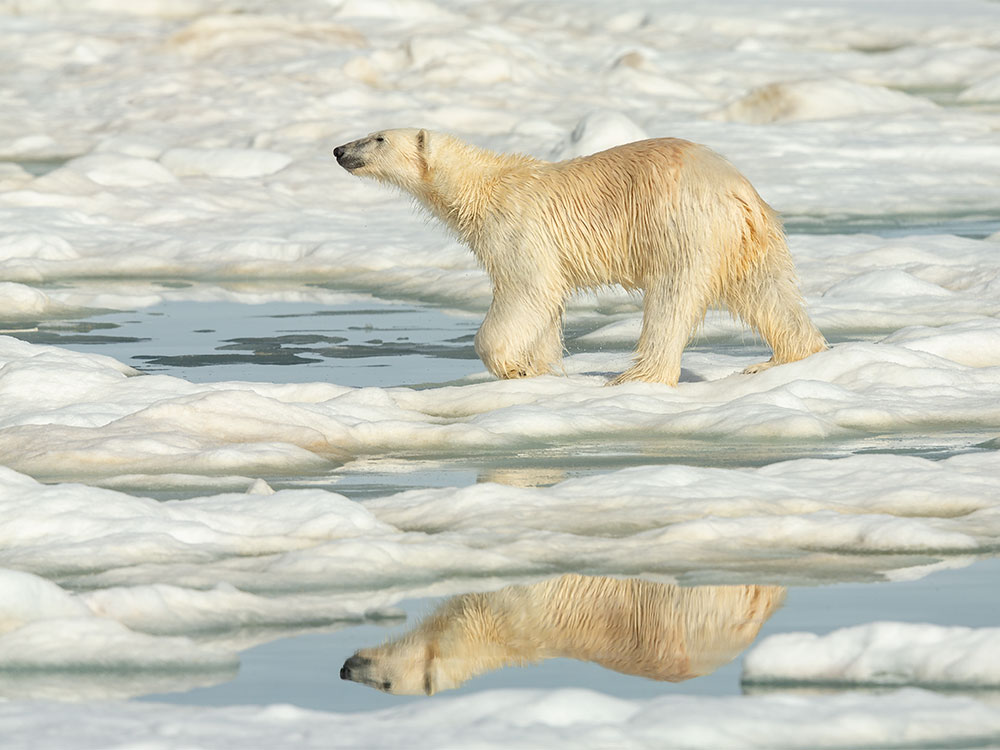 |
|||||||||
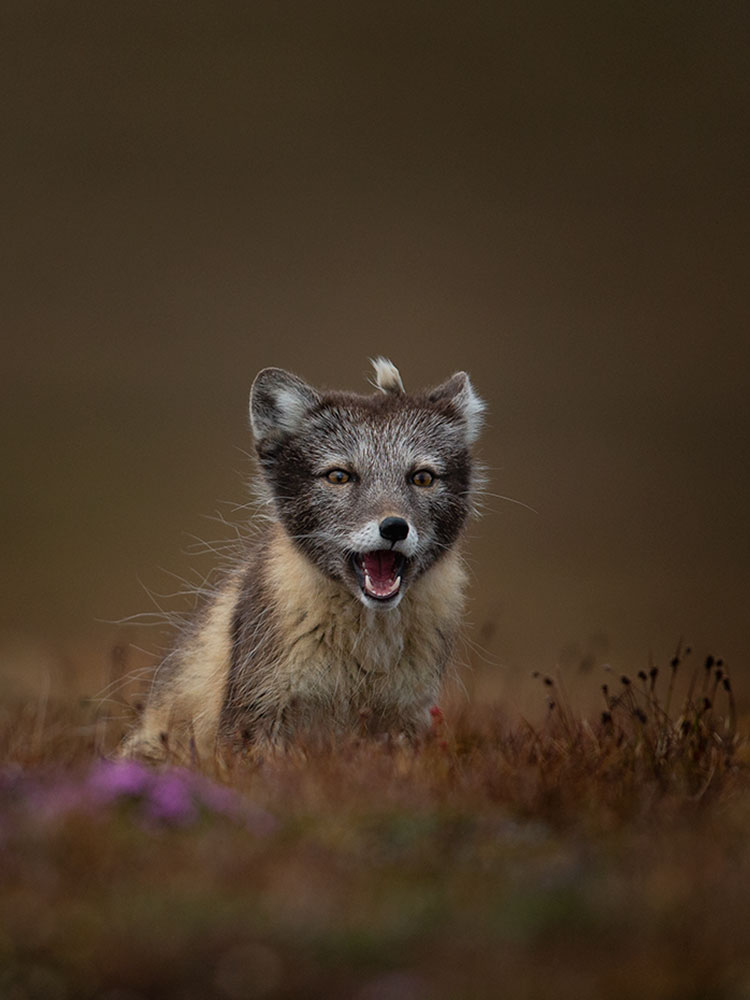 |
|||||||||
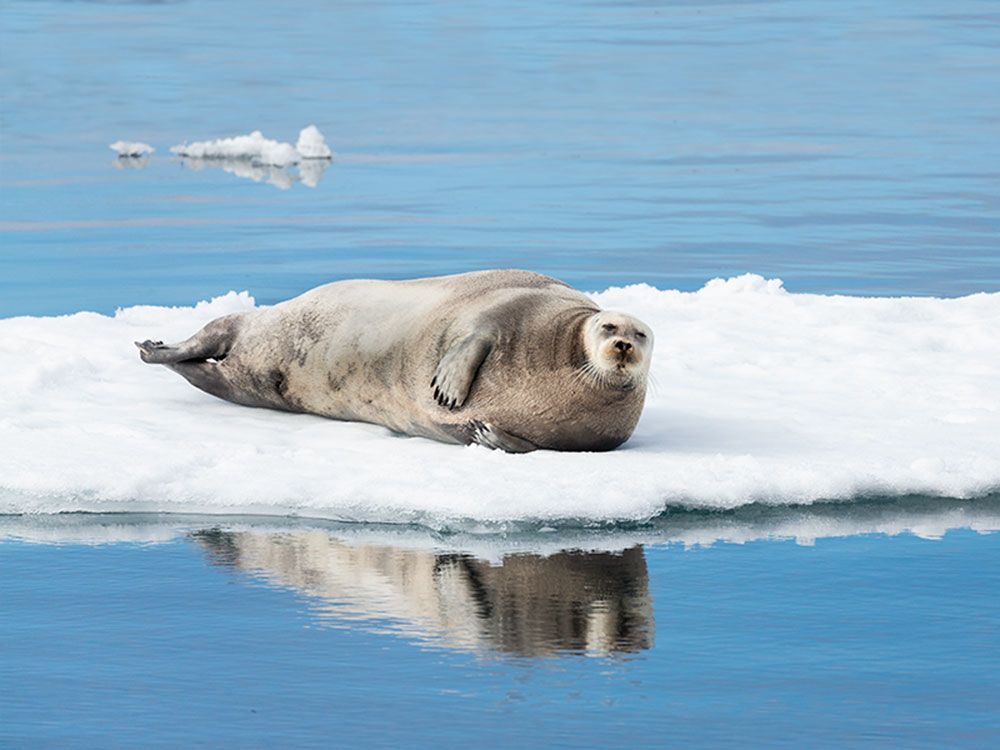 |
|||||||||
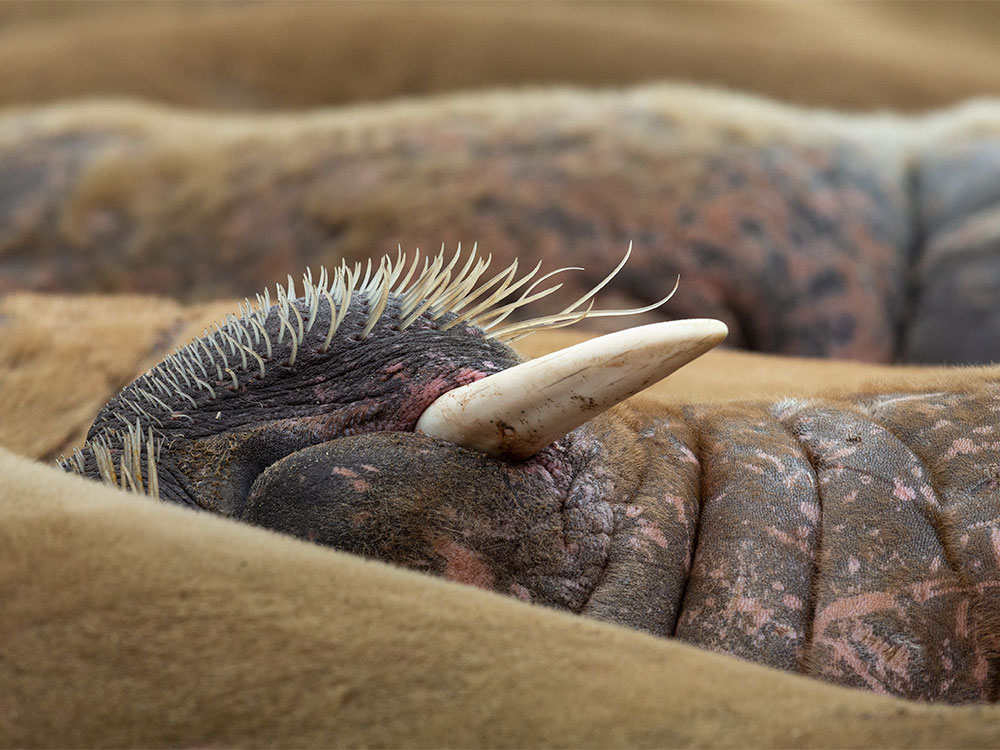 |
|||||||||
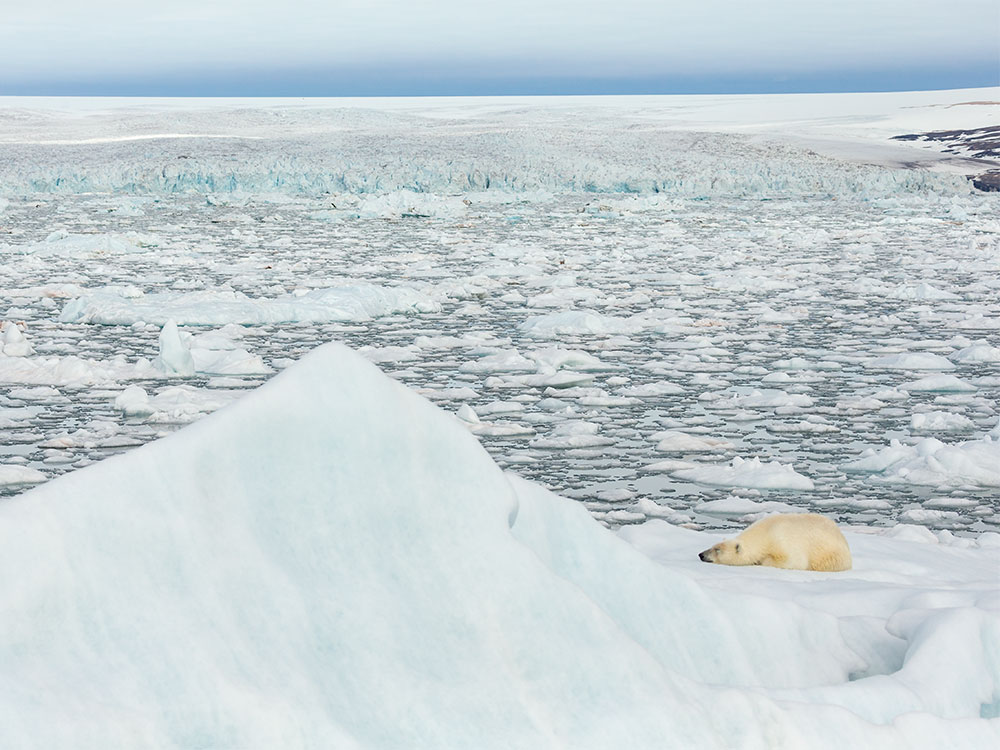 |
|||||||||
|
All of the above photographs are images that I am pleased with, and all feature in my "Journey To The Arctic" talk. But, given the fact that Polar Bears are obviously such a popular "blue chip species", I guess my next print run of cards and my 2019 calendar will feature just Polar Bears. |
|||||||||
|
|
|||||||||
| Tuesday 23rd October | |||||||||
| Something A Bit Different | |||||||||
|
It is always good to try and us my camera to create a different type of image from the standard shot. In reality, I guess that I usually end up taking quite a few standard types of images that are reasonably safe in terms of viewpoint, effect, size in the frame, etc. But once I have a number of these on my memory card, I usually take the opportunity to try and photograph the subjects from a different perspective. An example of this is this Walrus image which was photographed on my recent visit to Svalbard. It will no doubt not be to everyone's liking, but hopefully, it will appeal to some people. Indeed I have tried to include quite a few images of Walrus that are a bit more abstract into my new talk "Journey To The Arctic". That was a shameless plug!! |
|||||||||
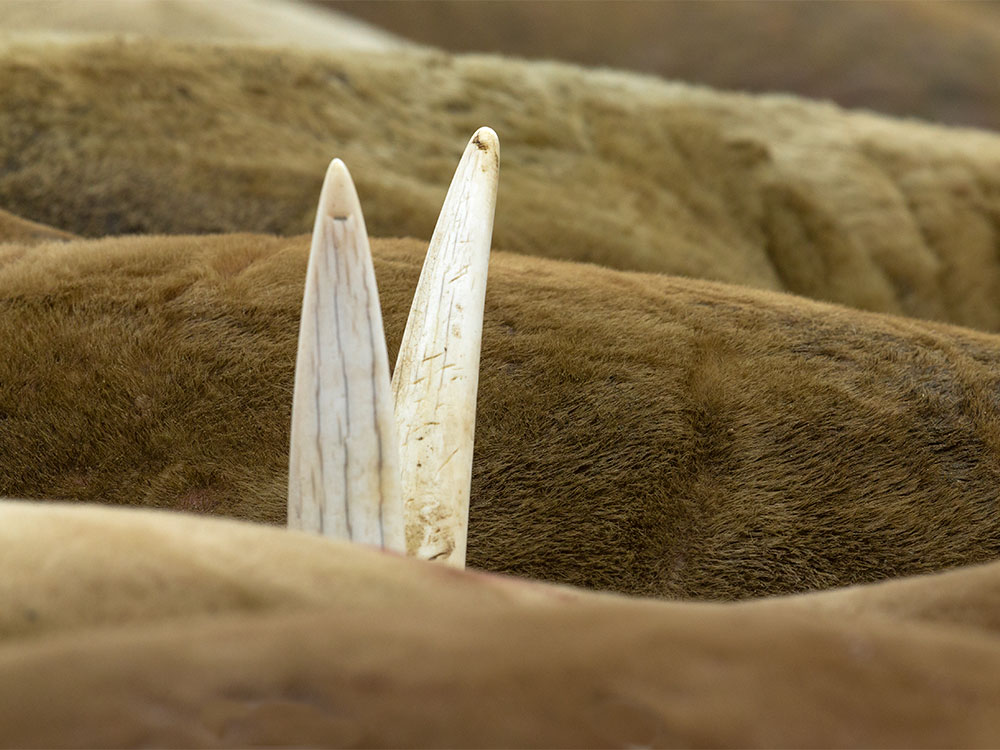 |
|||||||||
|
|
|||||||||
| Saturday 22nd September | |||||||||
| All You Need Is That Little Bit Of Luck | |||||||||
|
One of the joys of traveling by boat in the Hebrides is the knowledge of knowing that you are going to view some great scenery, along with a very good chance you will also get to see some great wildlife. This obviously varies from trip to trip and sometimes it can take a few days for the sightings list to grow. Some trips see dolphins or porpoise during the first few days, whilst on other trips, it may be towards the end of the trip when a Minkie Whale decides to show itself very close. Sometimes you will need to be patient and wait to see what shows during the days ahead. But, the thrill of not knowing what is going to show up will usually pay dividends and you will be rewarded with good sightings during the voyage. During the summer, I have been fortunate, I visited Svalbard for an extended trip, and we had a very similar experience, each day we did not know if today was going to be the day when we saw a mother polar bear with cubs, or a large male bear hunting, or even whales, walrus, or Bearded Seals, but as regular readers of my blog will have seen, over the weeks, we saw and photographed some really great wildlife sights. |
|||||||||
|
During the second day of a recent trip to the Hebrides, I was working as a guide for Hebrides Cruises, and we had just returned from a pleasant walk on the islands of Canna and Sanday and were on Elizabeth G our boat. Everyone was settling down to a cup of tea and slice of cake whilst getting ready to enjoy the onward journey across the Minch to Mingulay at the far southern end of the Outer Hebrides chain. Obviously, it always pays to keep a good look out and everyone was hopeful that during this passage we might see a few Common Dolphins or with a bit of luck perhaps even a Minkie Whale. |
|||||||||
| We had traveled for about six miles on our journey, and everyone had settled down to enjoy the warm afternoon, guests and crew were chatting, the sea had a few small waves and everyone was relaxing. There was a good buzz onboard as we all had anticipations of what islands we would visit during the week ahead, what walks we would do, and what wildlife we would see. | |||||||||
|
The bridge is a good place to see the horizon as it is quite high up, and sometimes dolphins or whales are spotted from this higher vantage before they are spotted by those who are on the deck. This was the case on this particular Sunday afternoon when those on the bridge saw some marine life on the horizon. At first, it was in the far distance and people were unsure if it was dolphins or a Minkie whale, but as we got nearer it was obvious it was much darker in colour and much bigger. Very soon we realised we were looking at the huge dorsal fin of an Orca (also known as a Killer Whale) this was clearly at least two meters in height and black in colour. |
|||||||||
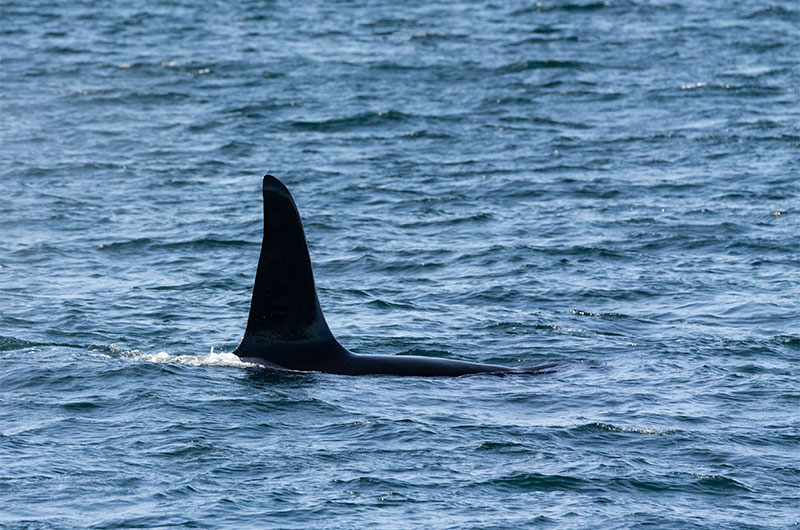 |
|||||||||
|
We slowed the boat down and called everyone onto the deck with their cameras and binoculars so they could enjoy the views, Without any doubt, the sighting of an orca is a rare treat in the Hebrides, the whale was identified as a large male due to its large dorsal fin size. He surfaced a few times at a mid distance, allowing everyone to get a view, before disappearing again into the ocean. |
|||||||||
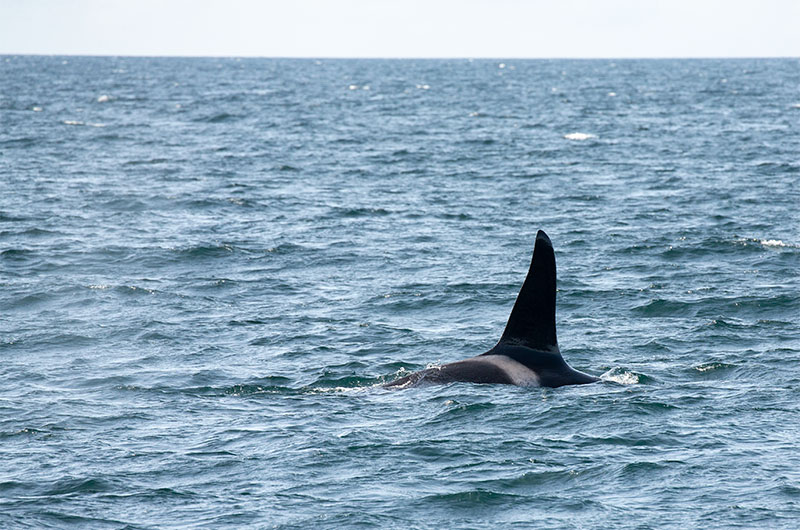 |
|||||||||
| During this time we only saw one whale, everyone was hoping he may be part of a pod and there was going to be more to see. He kept showing his dorsal fin along with his back whilst he was breaking the surface of the water. There may have been more than one whale, but we will not know, he might have been trying to lure fish to swim deeper so they could be hunted by other orcas below. | |||||||||
 |
|||||||||
| during this time, there was great excitement on deck as everyone scanned the horizon hoping the orca would continue to surface again for more views. We were in luck, as the orca surfaced for at least another six or seven times during the next 20 minutes or so, allowing everyone to get some great views of this wonderful marine mammal. | |||||||||
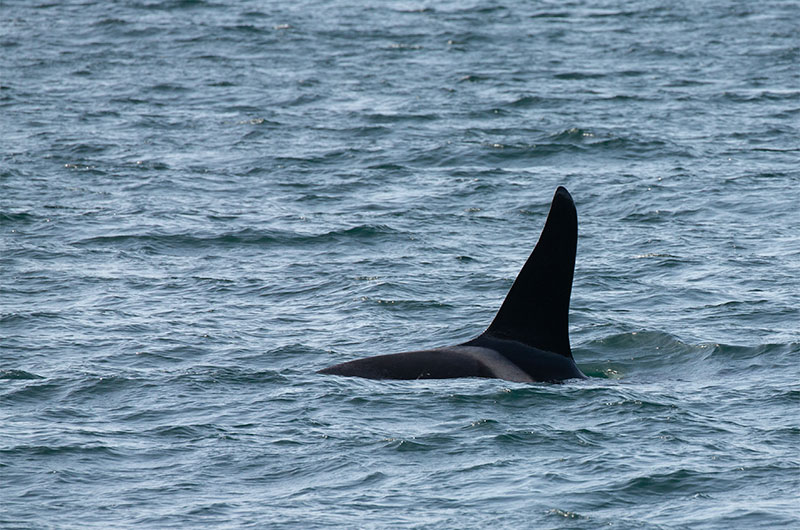 |
|||||||||
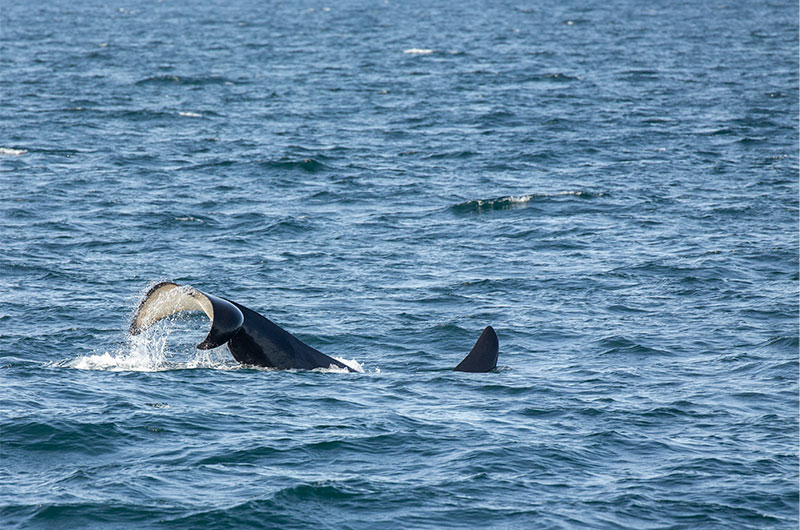 |
|||||||||
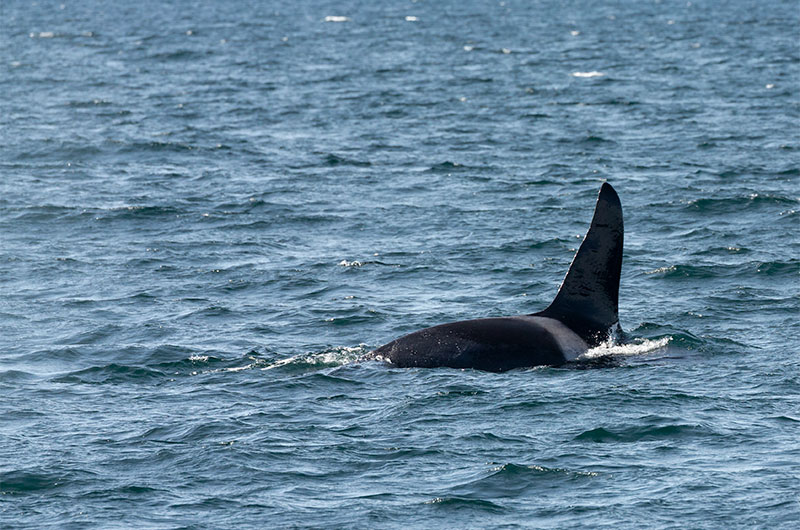 |
|||||||||
|
|
|||||||||
| Wednesday 15th August | |||||||||
| My New Talk Is Now Ready: " Journey To The Arctic" | |||||||||
|
It will not be a surprise to anyone that has been looking at this blog or my facebook posts of the past few weeks to see that the title of my new wildlife photography show is "A Journey To The Arctic" Over the past few days, I have been busy putting the finishing touches to my latest illustrated wildlife photography show. Over the coming few days I am pleased to be able to show the talk to a few friends as a trial run before it goes live to audiences at camera clubs, wildlife groups, etc. I am really pleased to also announce that there are already a few booking for this talk. indeed, If you would like to book me to show this talk for your group, then please get in touch (if you don't know my details, then there is a link on the "Contact Nigel" tab on this web site). Therefore, I will soon be fully up and keen to start, the talk will then be added to the talks section of this website with additional details. But needless to say, many of the Polar Bears and other images on my blog in the last month will form part of this new show which highlights my wonderful time in the far north. |
|||||||||
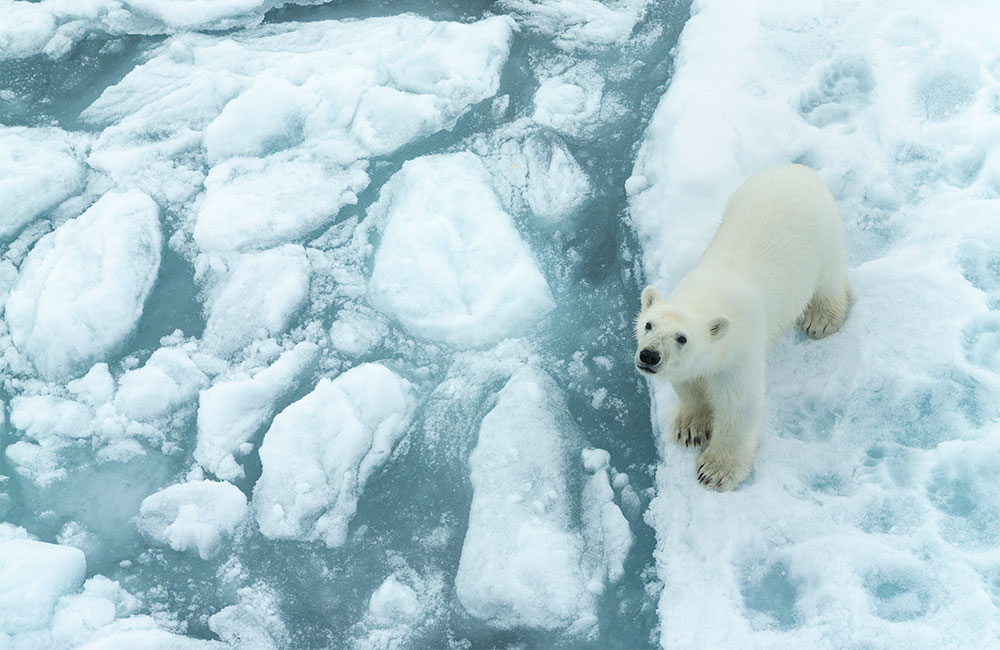 |
|||||||||
|
|
|||||||||
| Friday 10th August | |||||||||
| Could Polar Bears Be My Favourite Wildlife Subject? | |||||||||
|
I know that I should not have favorite subjects. But if I did then there would be many contenders including Arctic Fox, Woodpeckers, Grouse, etc. But if I had to choose, then it would be hard not to pick Polar Bears. All of these images which were photographed recently on my Arctic trip provide a few a few reasons why. |
|||||||||
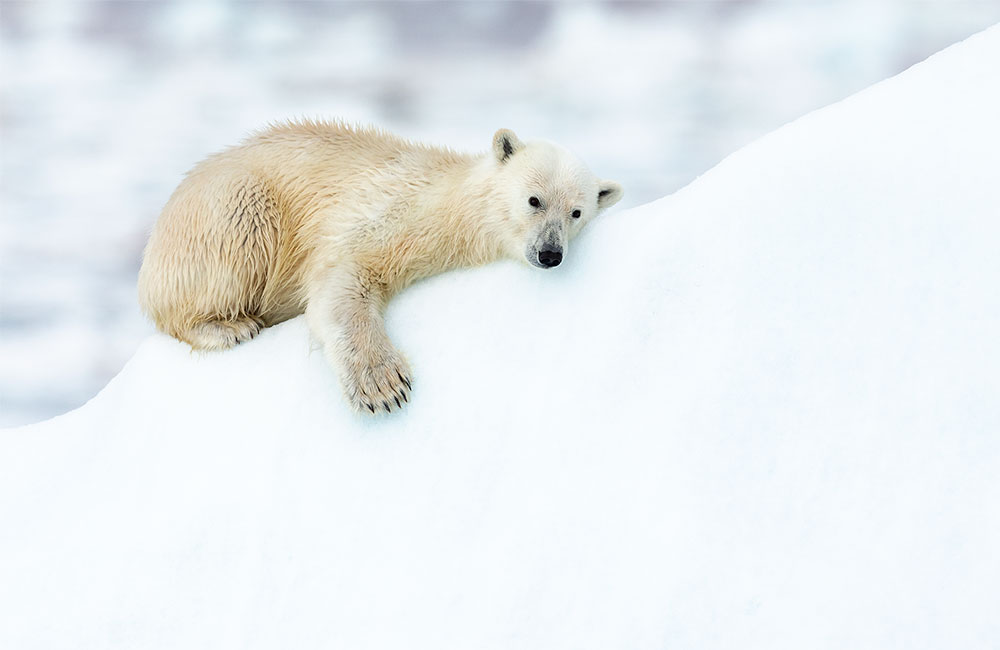 |
|||||||||
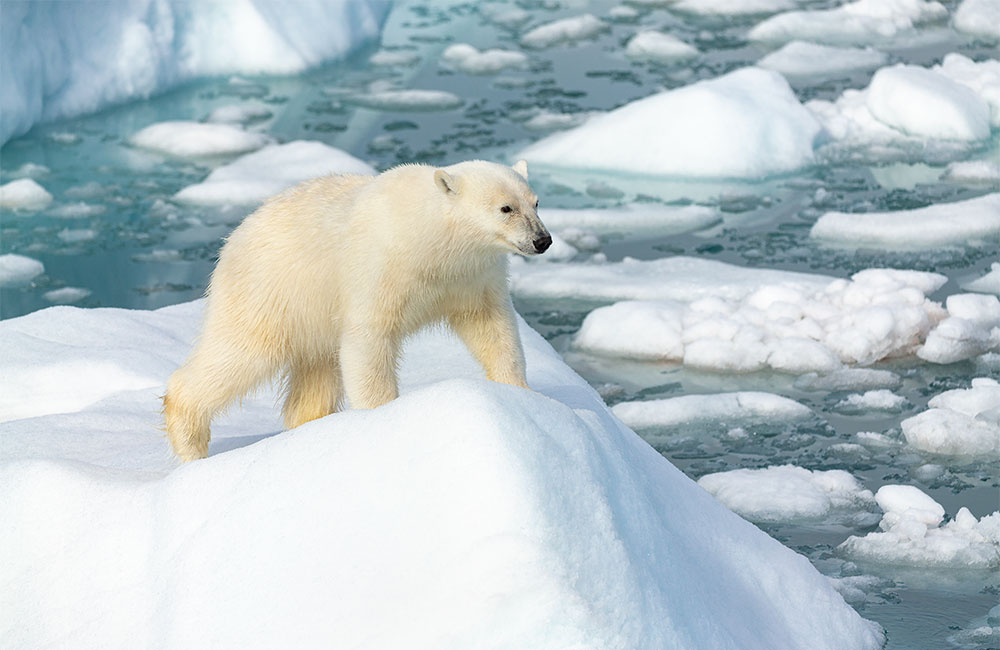 |
|||||||||
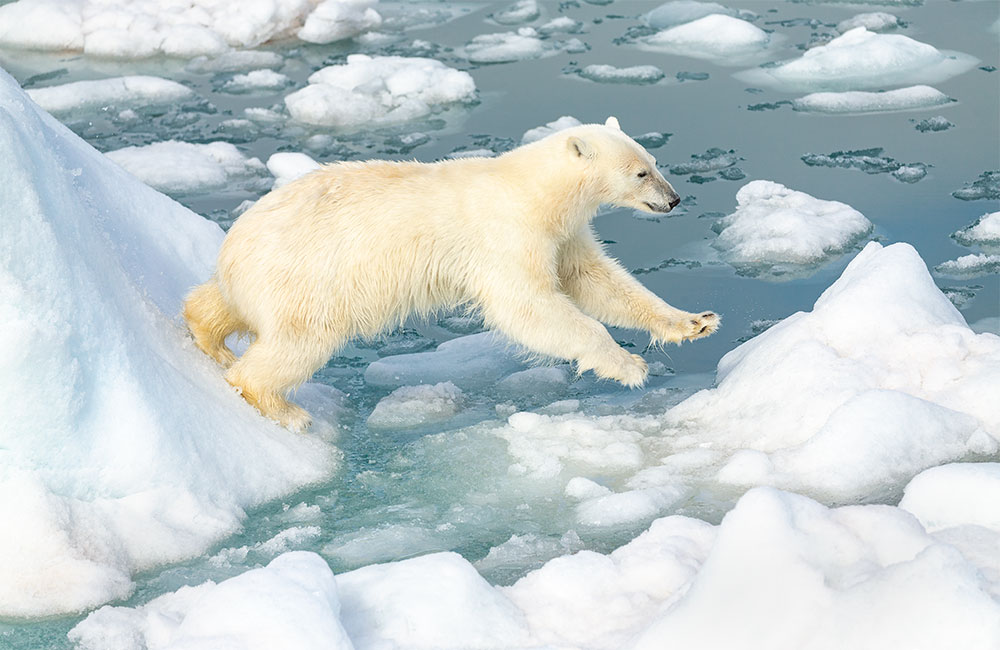 |
|||||||||
|
Who can not love them? |
|||||||||
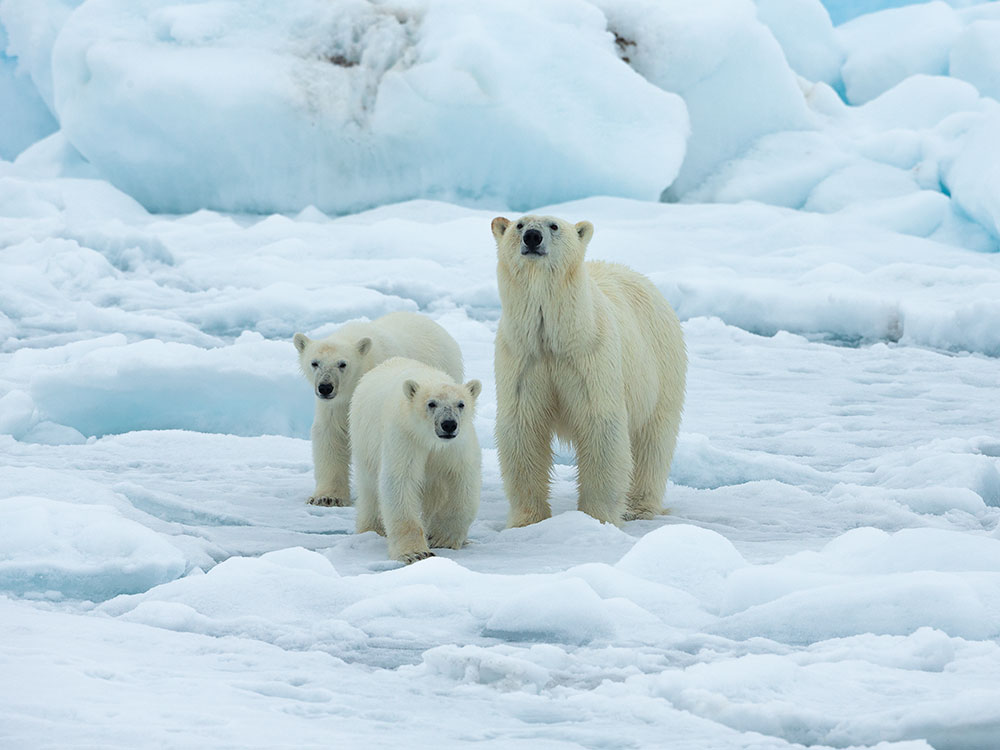 |
|||||||||
 |
|||||||||
|
|
|||||||||
| Monday 6th August | |||||||||
| The Havsel | |||||||||
---59O9598.jpg) |
|||||||||
|
My journey to the artic was onboard a boat named "The HavseL" which was built at Kalvereid in Norway back in 2004. The ownership transferred in 2004 to its current owner which is Bjorne who has used it for a number of uses over the past 14 years including hunting, fishing, support for film crew, support for offshore oil riggs, and now in 2018 for a photography trip arround Svalbard looking for wildlife amoungst the ice. The Havsel is 33 metres long and has a draft of just 3 metres which gives it lots of opportunities to move easily amoung the ice and narrow channels that are found arround Svalbard. It weight was 300 tones, but this was quickly added to with fuel and water, let alone the vast ammount of camera gear that our party had onboard. It carries 75 tones (75,000 litres) of fuel which gives it a great range, and during the seven weeks I was aboard we covered over 4000 miles, although Bjorne did mention that it uses about 80 litres of fuel per hour while cruising. The Havsel could accommodate a total of 16 people in a total of 8 cabins. There is a crew of four which consisted of the captain and the mate who did most of the navigation and driving of the boat. There were also two other crew who did the cooking and cleaning. |
|||||||||
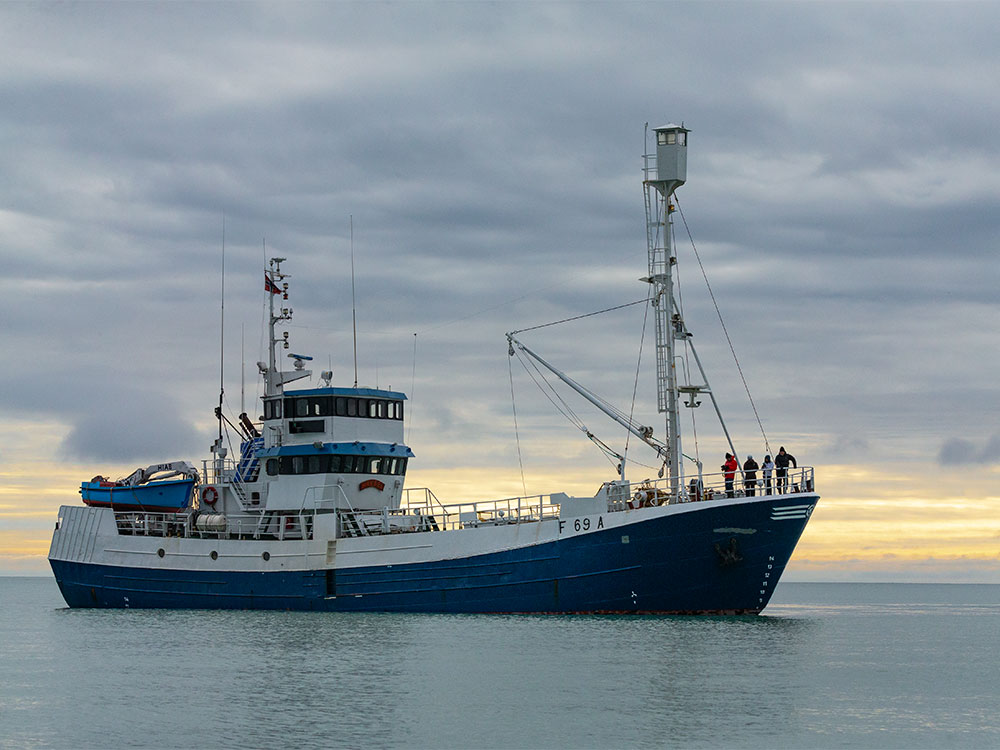 |
|||||||||
|
Over the past couple of years, I have spent many nights onboard boats, these have mostly been the two boats operated by Hebrides Cruises which are "Elizabeth G" and "Emma Jane". Although the total number of nights onboard these two is probably approaching 200 (including about 20 so far in 2018), it is unusual to spend more than a few weeks onboard without a break of some kind. But for my recent journey to the Arctic, I spent 48 consecutive nights onboard the Havsel. It is a bigger boat in terms of length, the number of decks, weight, etc. etc. |
|||||||||
---59O9536.jpg) |
|||||||||
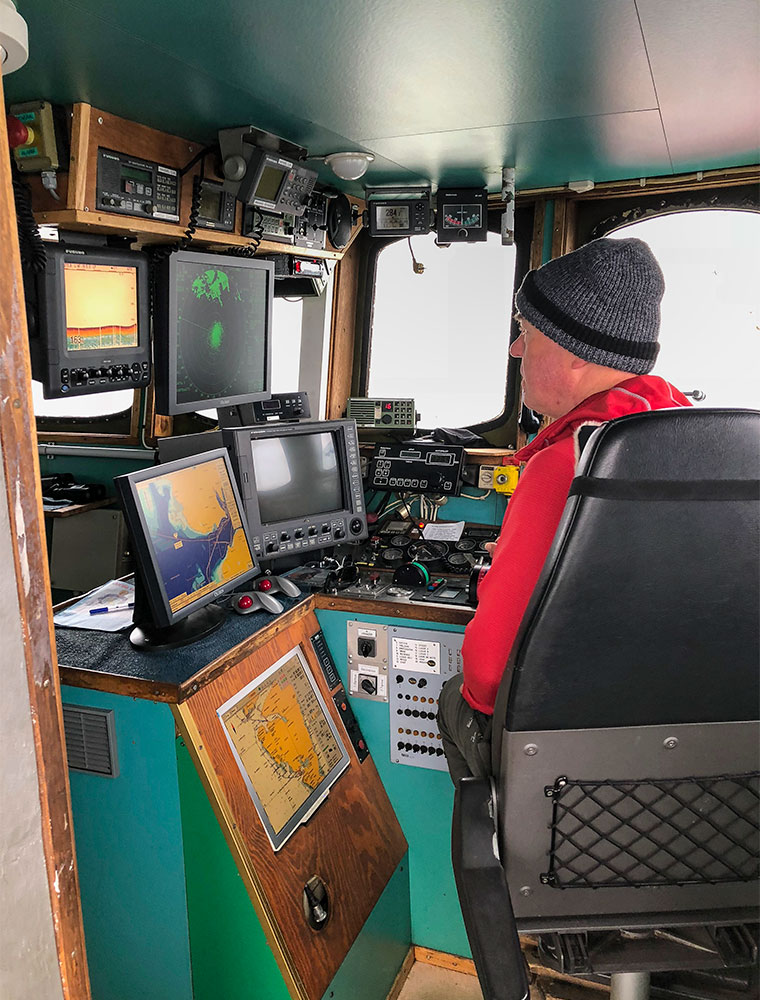 |
|||||||||
|
No guesses for identifying who is driving the Havsel in the photo above. The boat below was a "Buster" which is one of the launches which we had onboard which were lifted over the side by a winch on the occasions that we went ashore. There were two aboard, they each had an outboard motor and there were perfect. |
|||||||||
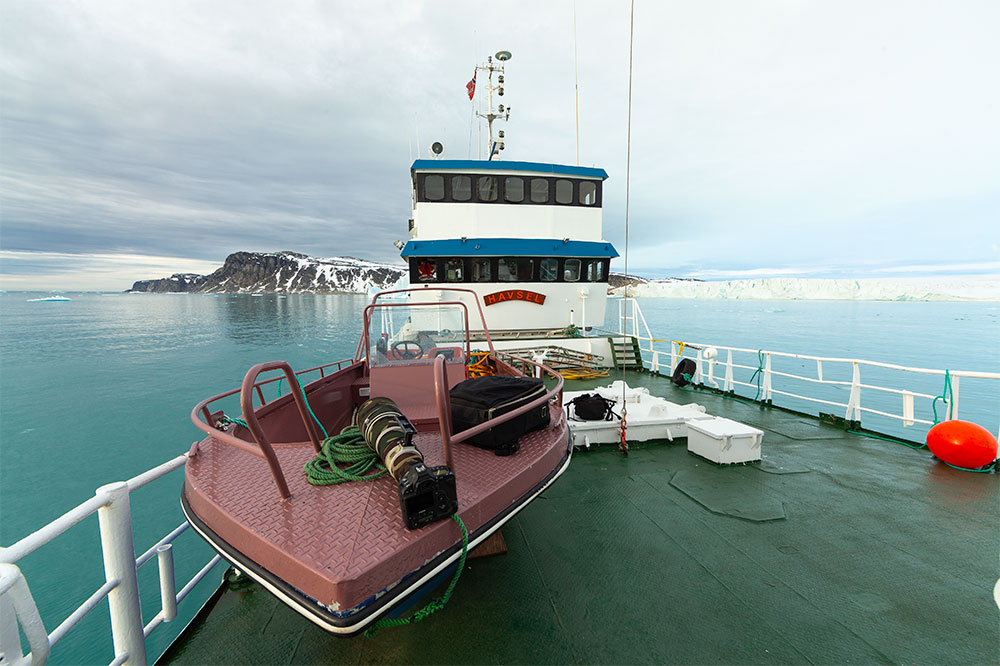 |
|||||||||
---59O9536.jpg) |
|||||||||
---59O9500.jpg) |
|||||||||
| The advantages of ascending the 17 metres to the crows nest was definately worthwhile because of the different perspective the view offered of the boat. But it gave the added advantage of giving a clearer and longer view as seen in the image below. | |||||||||
---59O9851.jpg) |
|||||||||
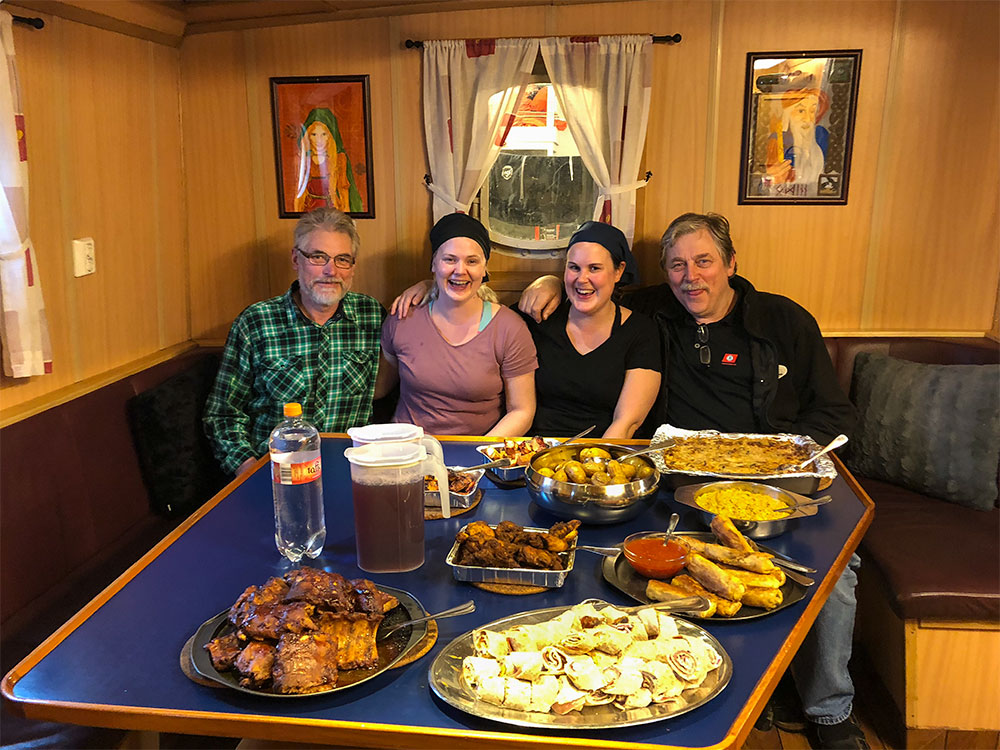 |
|||||||||
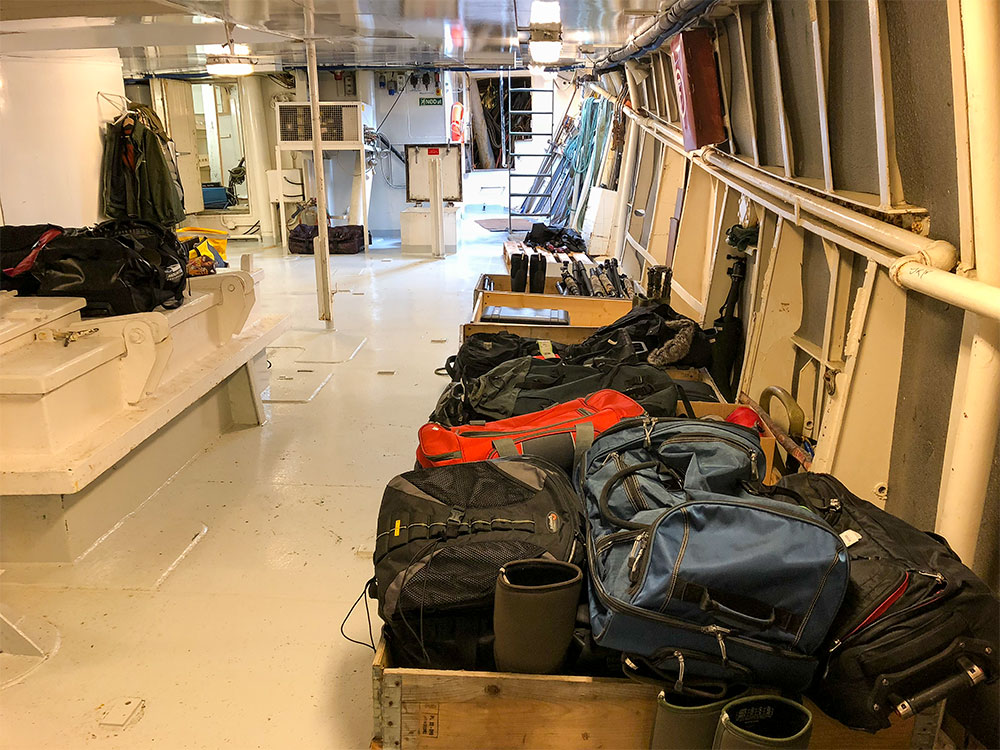 |
|||||||||
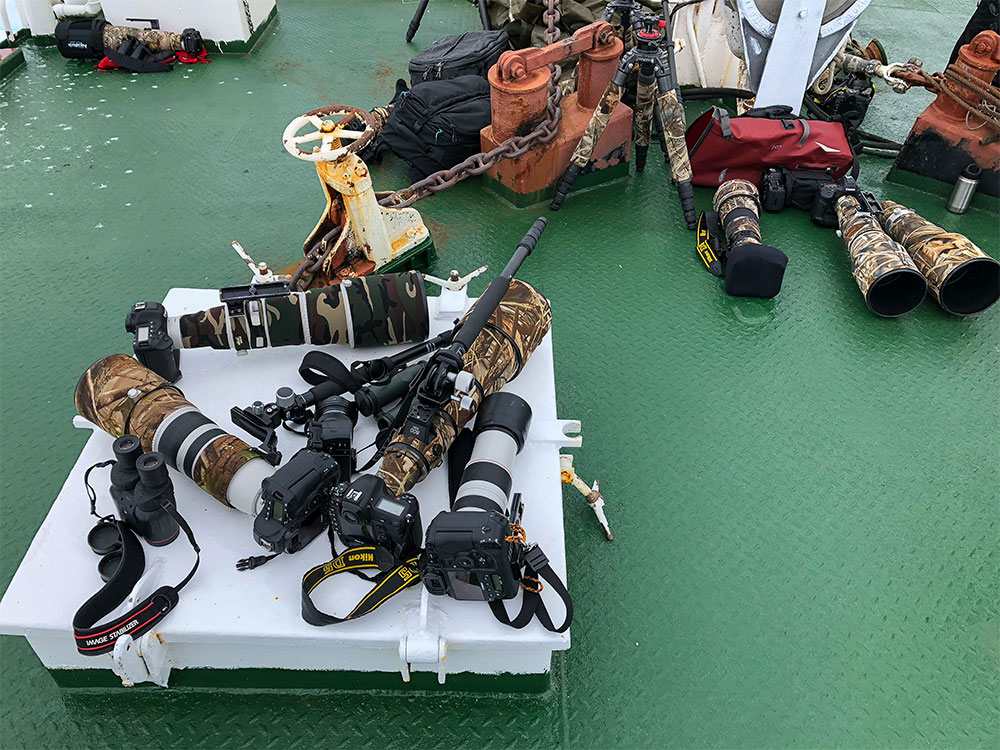 |
|||||||||
|
|
|||||||||
| Wednesday 1st August | |||||||||
| Journey To The Arctic | |||||||||
|
I aim to update this website (particularly this blog section) at least once per month. However, there have been no updates for a number of weeks due to the fact that I have had very little access to modern wi-fi technology for the past seven weeks. The reason for this is that I have just returned from an amazing trip to the Arctic. |
|||||||||
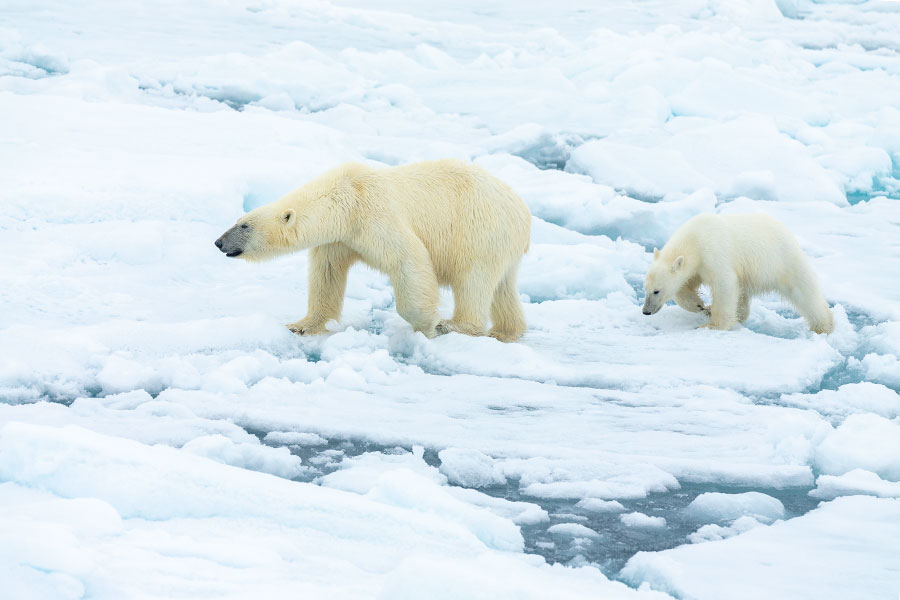 |
|||||||||
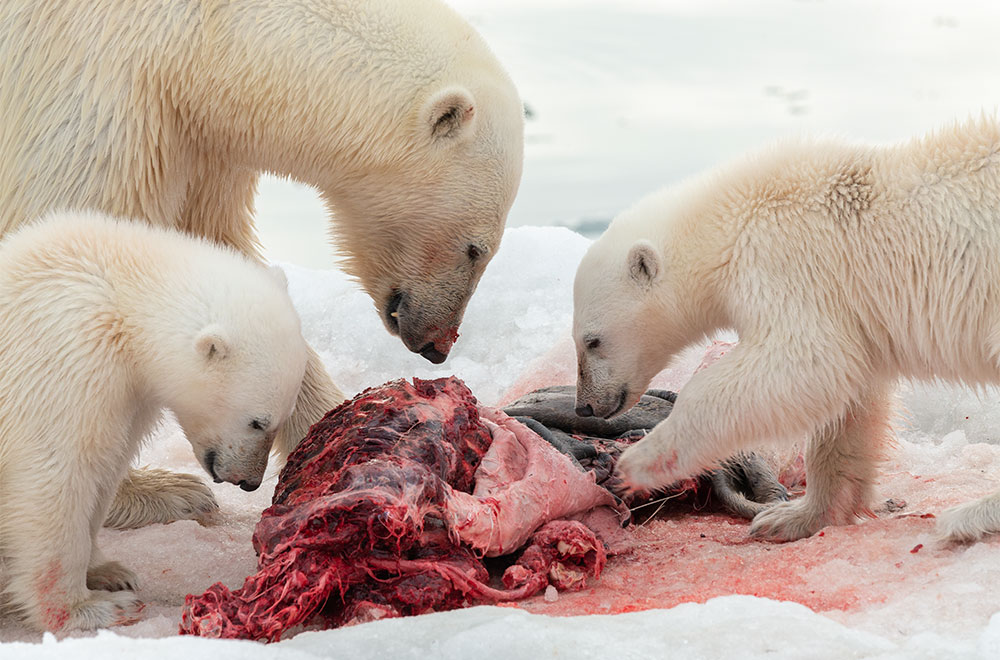 |
|||||||||
|
The Main focus of the visit was to find, see, and photograph Polar Bears, and I am pleased to confirm that in my seven weeks away we were fortunate enough to get sightings of over 100 Polar bears. We also saw some of the other Arctic mammals including, Reindeer, Walrus, and Arctic Fox. |
|||||||||
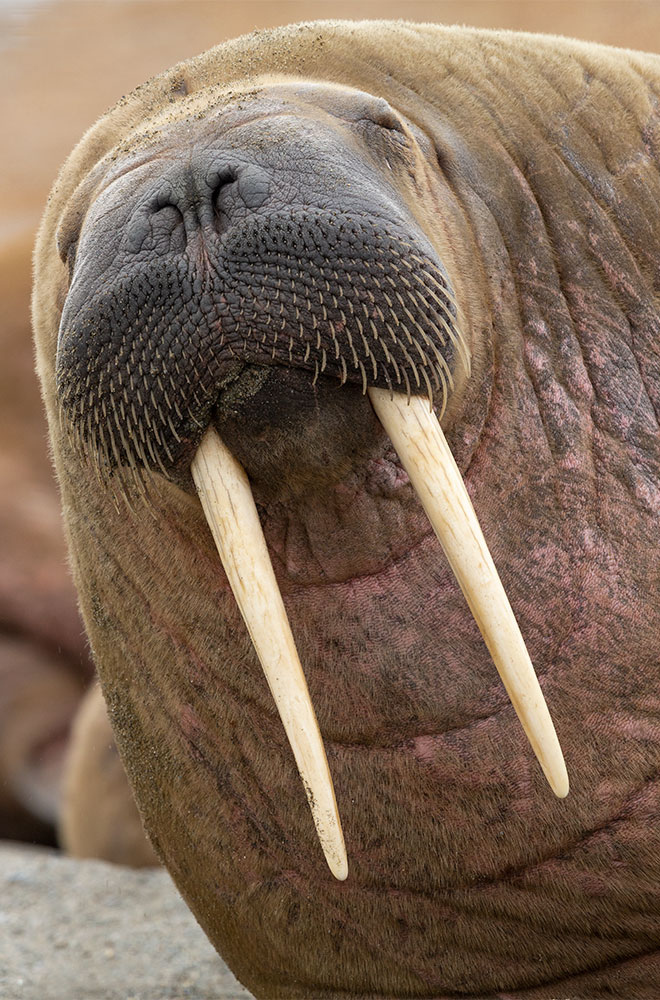 |
|||||||||
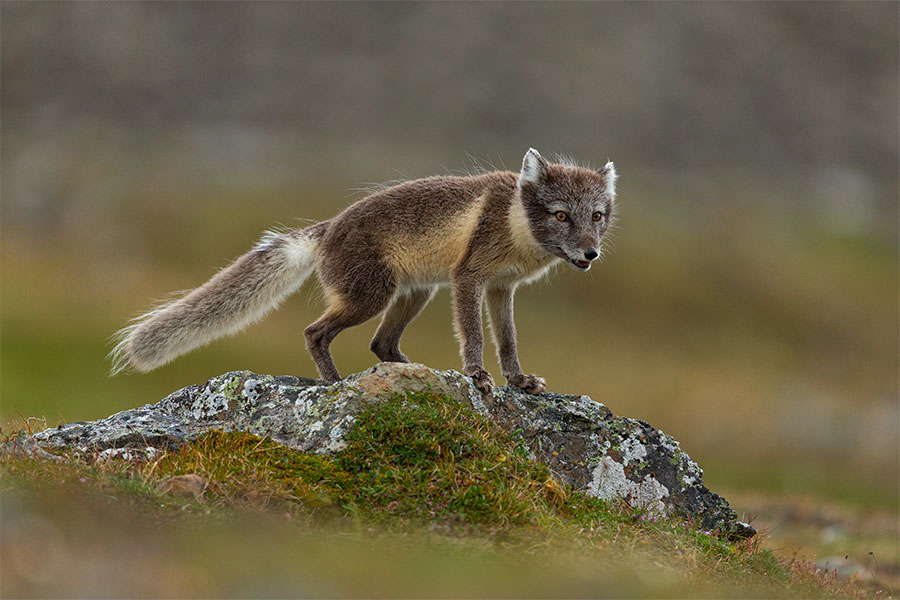 |
|||||||||
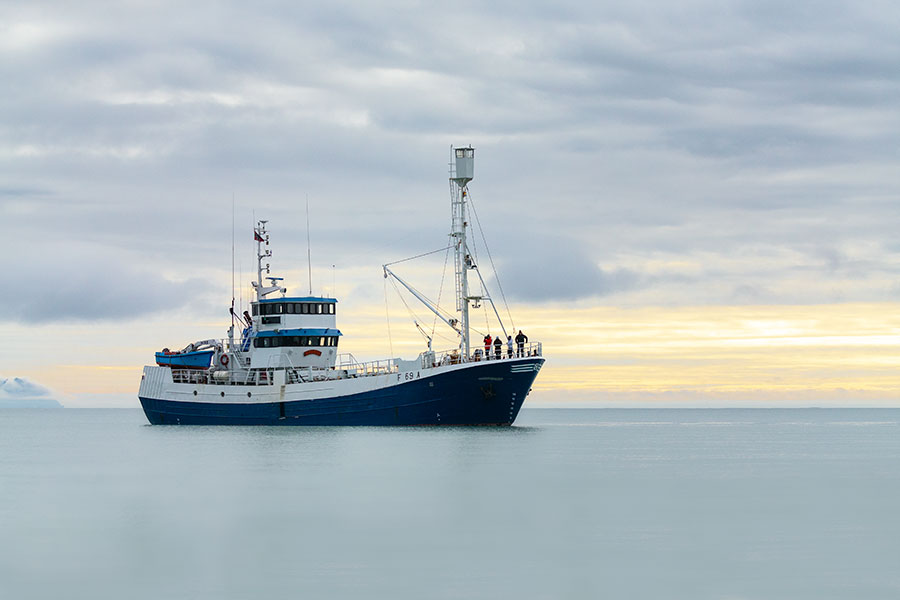 |
|||||||||
|
The boat for the voyage was "The Havsel" which I joined in Mid June in Alta which is in the far north of Norway. It was a great boat for this type of trips. and perfectly suited to Arctic travel. My intention is to add more information about my visit to Svalbard on both this blog and my gallery pages as time allows. It was an excellent journey and there are well in excess of 30,000 images to sort through. |
|||||||||
|
|
|||||||||
| Saturday 9th June | |||||||||
| World Gin Day | |||||||||
| And now for something completely different from my usual updates: | |||||||||
 |
|||||||||
|
Above is a picture of a well known brand of Gin in its distinctive own bottle which I have deliberately set about to photograph from a more unusual angle. I was a little unsure if I should post this as an update on this blog, Indeed I could also have added the Hebrides link, along with the fact that it comes from the small town of Tarbet on South Harris which is I have visited quite a few times in recent years. Indeed it is my ongoing Hebrides links that originally attracted me to this great drink. I am definitely no expert on Gin, but in my opinion, I think it would be very hard to find a better tasting gin than this. As well as posting this image on "world gin day", this image was originally taken to illustrate a magazine article that I had written for a well known monthly publication. As with all aspects of photography, it is always good to try something a bit different. |
|||||||||
|
|
|||||||||
| Wednesday 6th June | |||||||||
| Mr Black Hairstreak | |||||||||
|
It is always good to be able to view and then photograph rare butterfly species, and over recent years, I have certainly not spent as much time as I would like photographing our British butterflies. A few days ago, I saw a post on social media that the Black Hairstreak had emerged much earlier than usual, indeed they had emerged on the same day at two separate sites, one in Oxfordshire and the other in Northamptonshire. As it has been several years since I last saw the Black Hairstreak, I thought it would be good to visit the Northamptonshire site which is about 45 mins drive. The numbers are traditionally low and it is not uncommon for the numbers seen to be only a handful, this can make photography very hard, indeed it is best to avoid a weekend visit if possible. But over the past few days, the weather has been quite warm and sunny which has resulted in the number of butterflies continuing to emerge. Indeed I spent a few minutes chatting to the warden, and he confirmed that there were at least 17 butterflies in the woods at least four of five separate locations. The Black Hairstreaks prefer Dewberry which is managed especially for them at this site, and it has certainly paid dividends as there were indeed good numbers flying in the tree canopy. Luckily they were also coming down to lower levels to nectar and some were sitting fairly well for photography. The male black Hairstreaks always emerge before the females, and I only saw males during my visit, but it was certainly really good to see and photograph this lovely species once again. |
|||||||||
 |
|||||||||
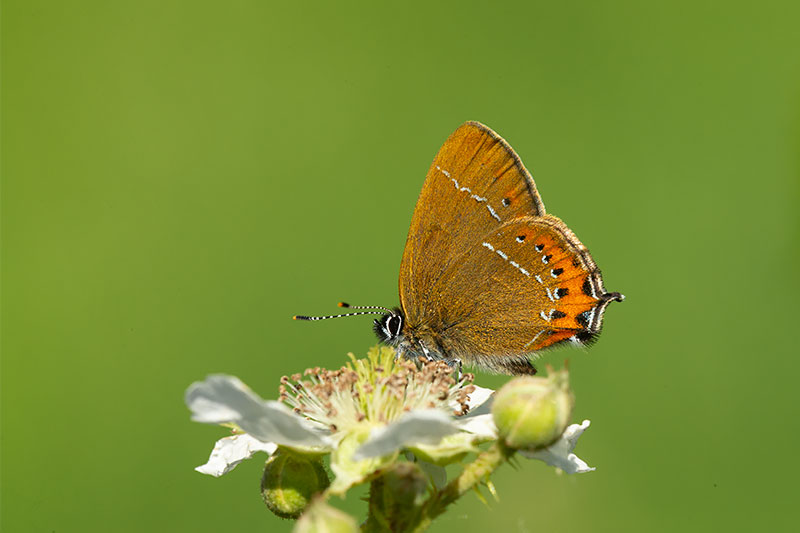 |
|||||||||
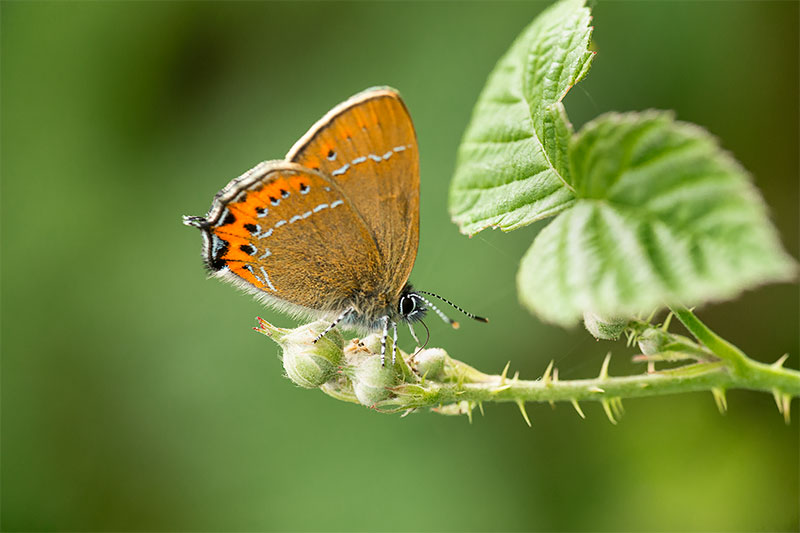 |
|||||||||
|
|
|||||||||
| Thursday 31st May | |||||||||
| Monkeys, Ladies, And The Military | |||||||||
|
Many years ago, I set out to photograph all of the British butterfly species and it took me about four years to complete this project. At the time, I was also keen on photographing all of the British Dragonflies and the British Orchids. You would think that the orchids would be the easiest of the three, after all, they don't have the ability to fly away like both the dragonflies and the butterflies. But In my opinion, the orchids are definitely the hardest of the three species groups to find and to photograph the set of all of the British species. The reason being, that some of the orchids are extremely rare and as a result, it is really difficult to find out site information, yet alone find the flowers to photograph if you visit the site during the flowering period. As a result, it was not long before, I gave up the idea of photographing all of the 50 odd species of British Orchid and instead, I decided to try and achieve photographic quality rather than photographic quantity. There are at least half a dozen orchid species that are extremely hard to find yet alone photograph. Then there is another five or six that only occur at a handful of sites of which the location of which is not made public. But there are three species of orchid that although very rare in Britain, the locations are very well known, Indeed a quick internet search can provide lots of useful information. These are the Monkey Orchid, The Lady Orchid, and the Military Orchid. I had some time free between other commitments, so set about visiting the three sites and trying to get some reasonable photographs. The dates that I had available was a bit early for all three species, and none of them were quite ready. But it was a good day out, it was good to see three orchid species that I have not seen before. A few of the resulting images are shown below. I want to visit all of the three sites again and get better photos, but due to other things that will have to wait for another year. |
|||||||||
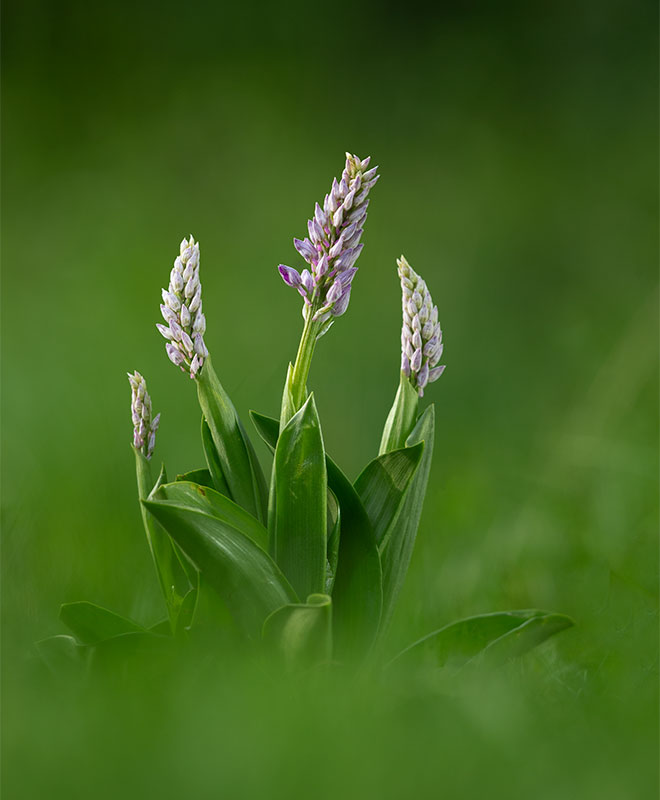 |
|||||||||
| Above, and below is the Military orchid which is perhaps the rarest of the three orchids photographed. | |||||||||
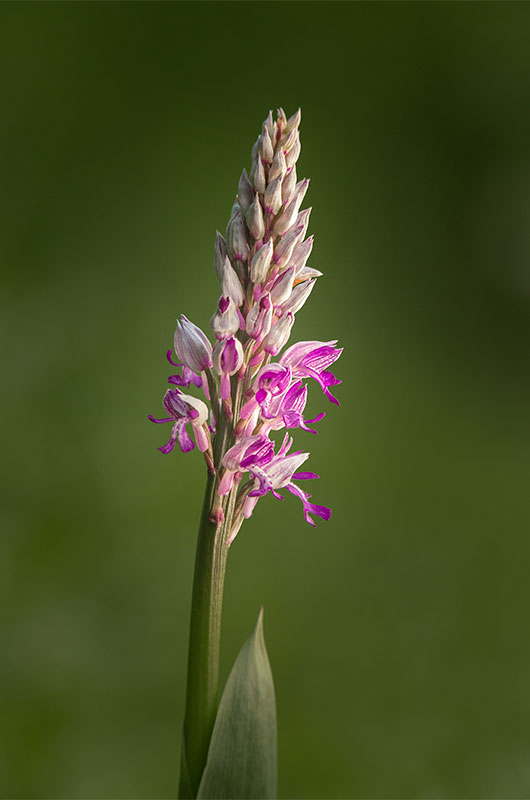 |
|||||||||
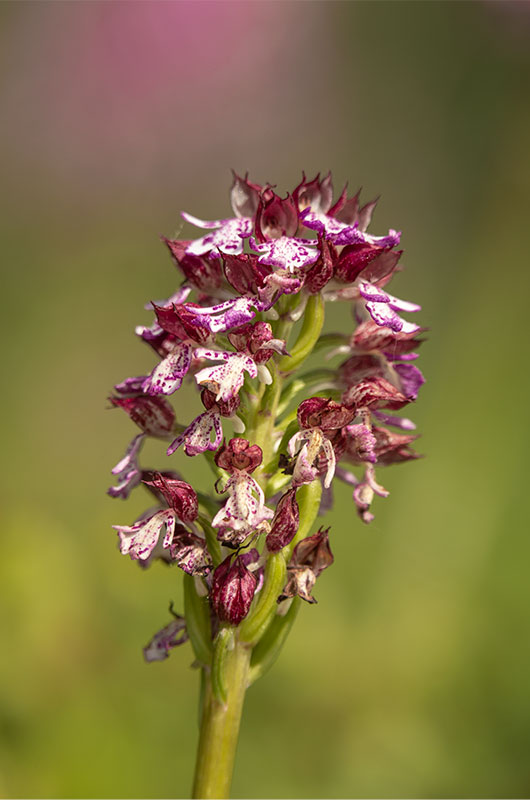 |
|||||||||
| Above is the Lady Orchid, and below is the Monkey Orchid | |||||||||
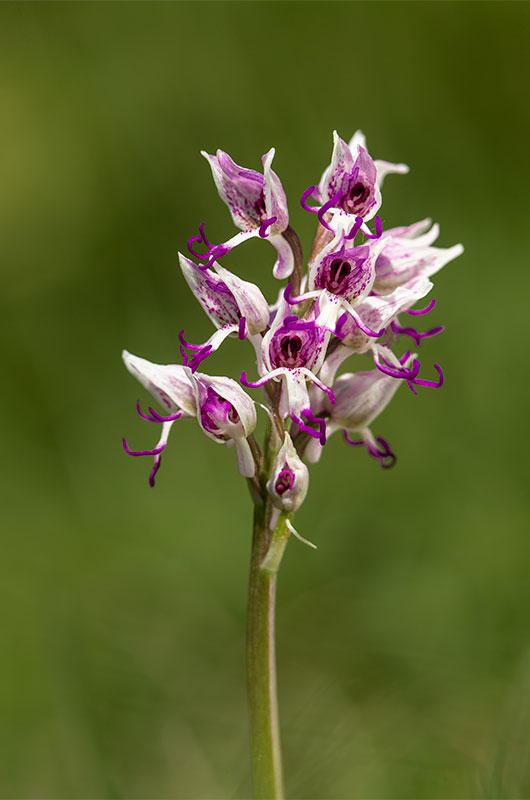 |
|||||||||
|
|
|||||||||
| Sunday 6th May | |||||||||
| It is always great to see Corncrake | |||||||||
|
Last week, was the start of the 2018 season for Hebrides Cruises and I was guiding a trip around Staffa, Iona, Treshnish, Coll, and Mull. It was a fantastic week with lots of wildlife seen by the guests. Indeed, we saw lots of Eagles, including 7 White Tailed and 2 Golden in one single day. During the week, we also saw Otter on the very first evening of the season while anchored off Seil. Other sightings included Hen Harrier, lots of seabirds including many many Puffins. One of the very special birds of the Hebrides is the corncrake, and it is really good news that their numbers are increasing after many years of decline. Over recent years, It is reasonably easy to find places on Coll, Canna, Iona, Uist, etc. where it is possible to hear corncrake calling |
|||||||||
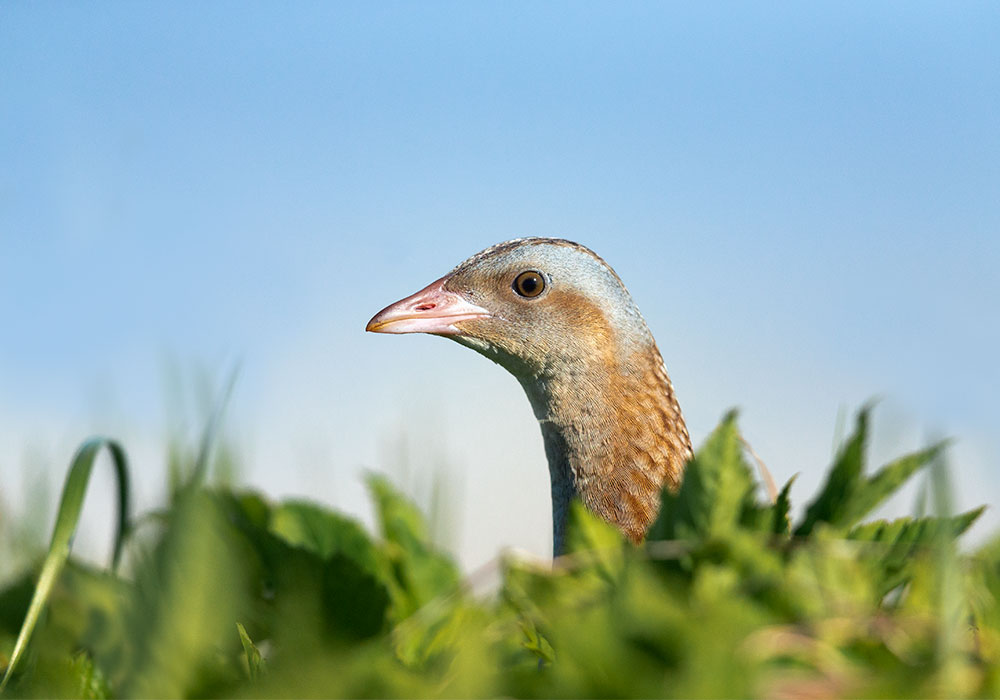 |
|||||||||
|
Hebrides Cruises has two great boats, below is an image of their boats left is: Elizabeth G, on the right, is: Emma Jane. During the 2018 season, I will once again be working on Elizabeth G as one of their wildlife guides. I took this image a few weeks ago during crew training. Stevie (one of the onboard chefs) and myself were working in a tender which gave us some nice low level views, and I took several publicity shots of both boats with a dramatic background a few miles off the coast of Oban. |
|||||||||
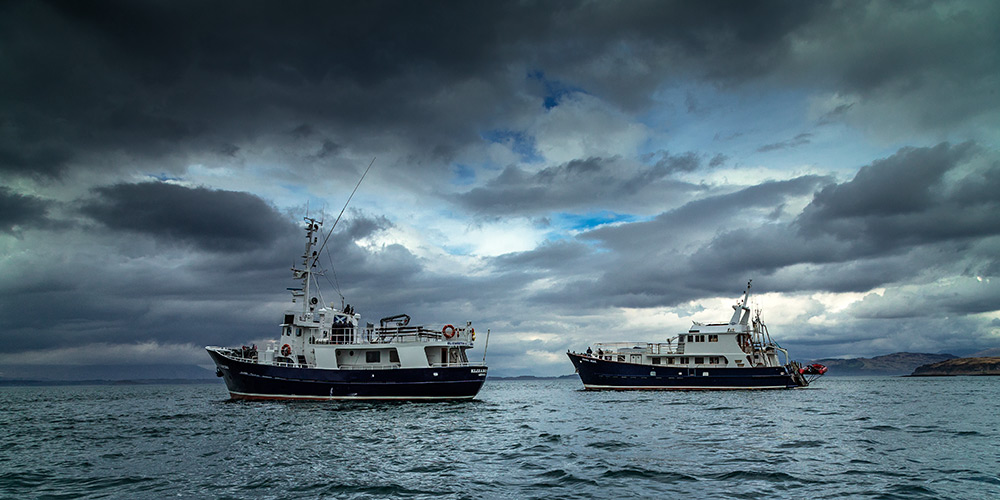 |
|||||||||
|
|
|||||||||
| Tuesday 17th April | |||||||||
| Favorite Images | |||||||||
| When reviewing your own photography, I am not sure if it is good or bad to have a favorite image or not? | |||||||||
| But if I was to choose a current favorite, it would be this rock arch which was photographed a few weeks ago in Northern Harris. | |||||||||
 |
|||||||||
|
|
|||||||||
| Thursday 12th April | |||||||||
| Lighthouses | |||||||||
|
During my time in the Hebrides each summer, we pass by many lighthouses, they are usually very colourful, photogenic, and its often easy to forget that they served such a useful purpose to so many sailors for many hundreds of years. For quite a while, I have wanted to capture a few more images of them, and during my recent visit, we managed to visit the most Northern lighthouse on the island of Lewis which stands right at the top tip at the Butt of Lewis. Many images were taken during the afternoon and evening. We also visited the island of Scalpay which is connected to Harris by a modern bridge and spent many hours photographing the light from different angles and viewpoints. So far, I have only managed to sort a selection of images from these two very enjoyable photographic sessions, but I wanted to add a few of them onto my blog before I missed the chance and it became old news. |
|||||||||
.jpg) |
|||||||||
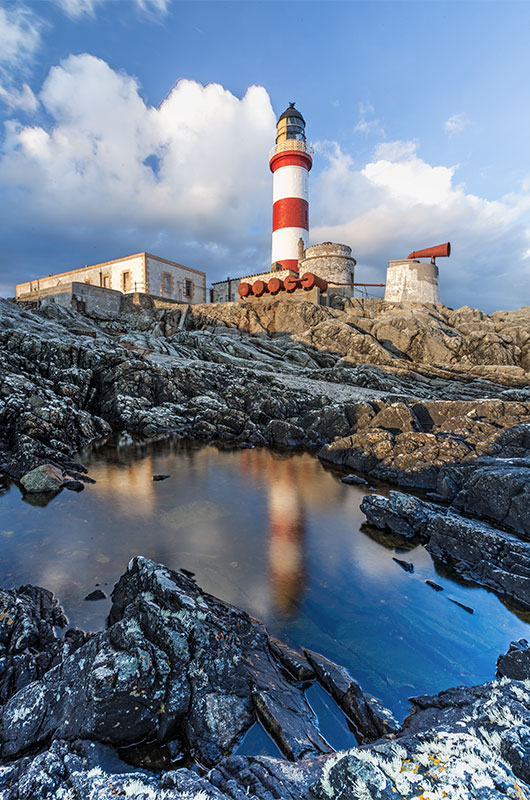 |
|||||||||
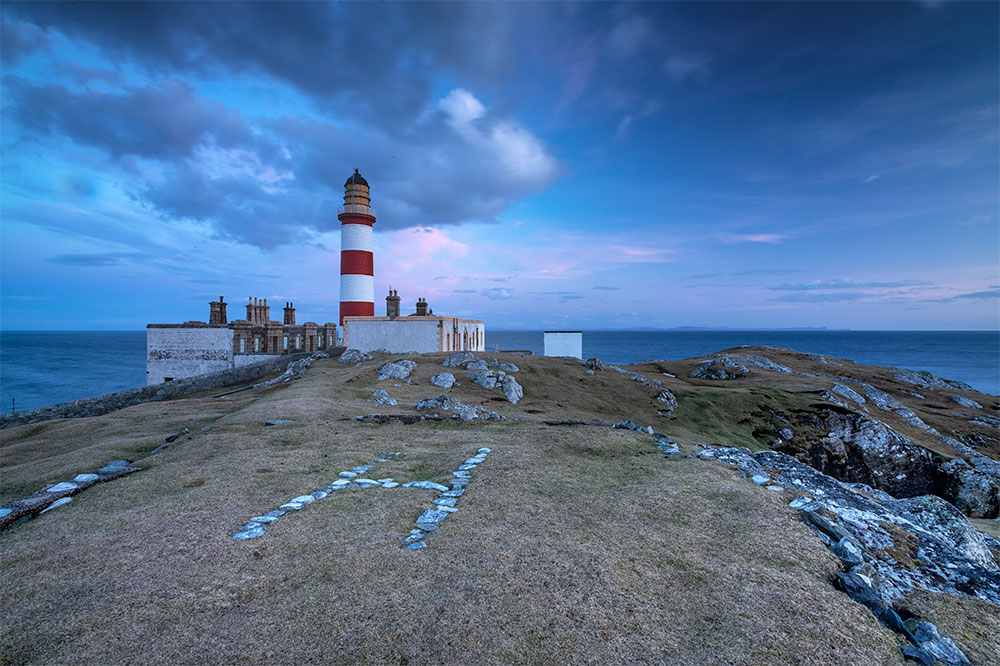 |
|||||||||
| Finishing off with something a bit different: | |||||||||
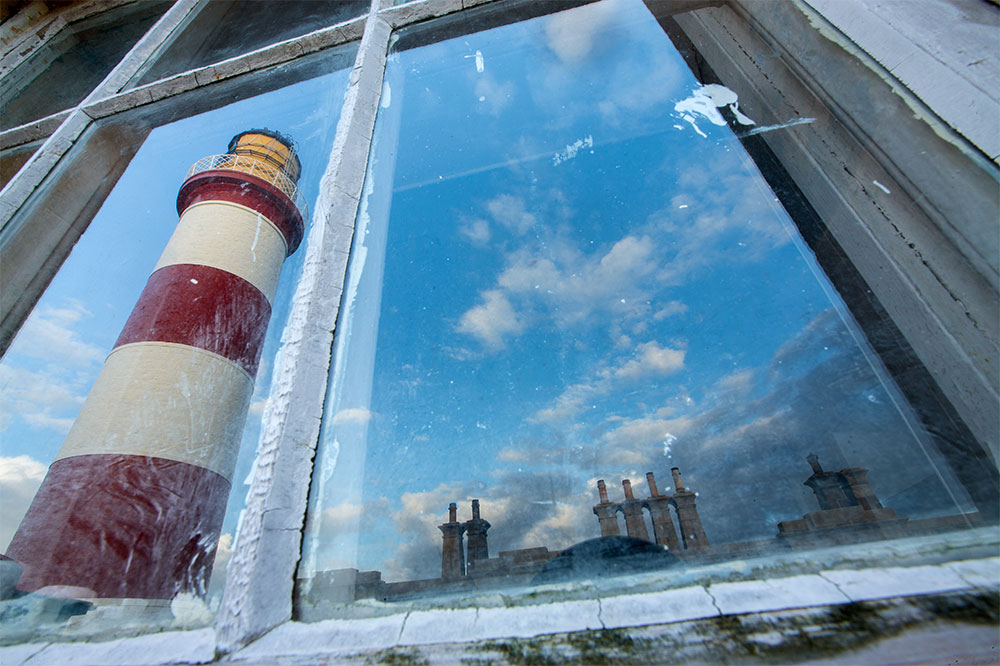 |
|||||||||
|
|
|||||||||
| Wednesday 11th April | |||||||||
| Harris And Lewis - Wow, What A Great Place For Landscapes | |||||||||
|
I have just returned (and am busy sorting out many images) from a ten day visit to Harris, Lewis, and Scalpay to try my hand at some landscape photography. This is a very quick post showing a tiny amount of images from the many great sites we visited which include famous beaches such as Lyskentyre on Harris. Along with historic sites such as the Callanish stones in Northern Lewis. I have many more images to sort but I can not recommend these far flung Hebrides islands enough. |
|||||||||
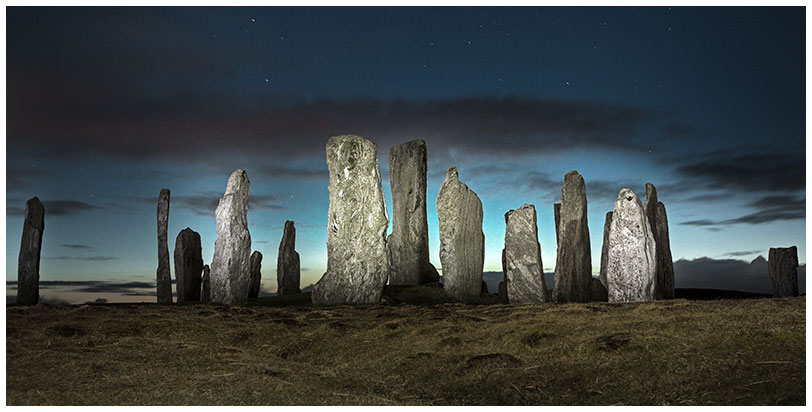 |
|||||||||
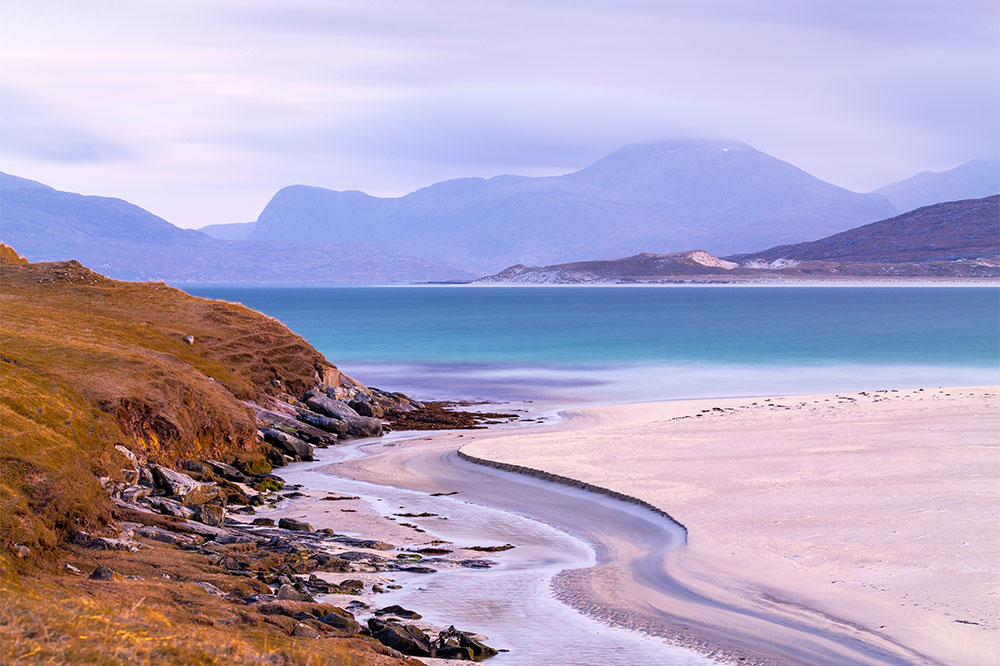 |
|||||||||
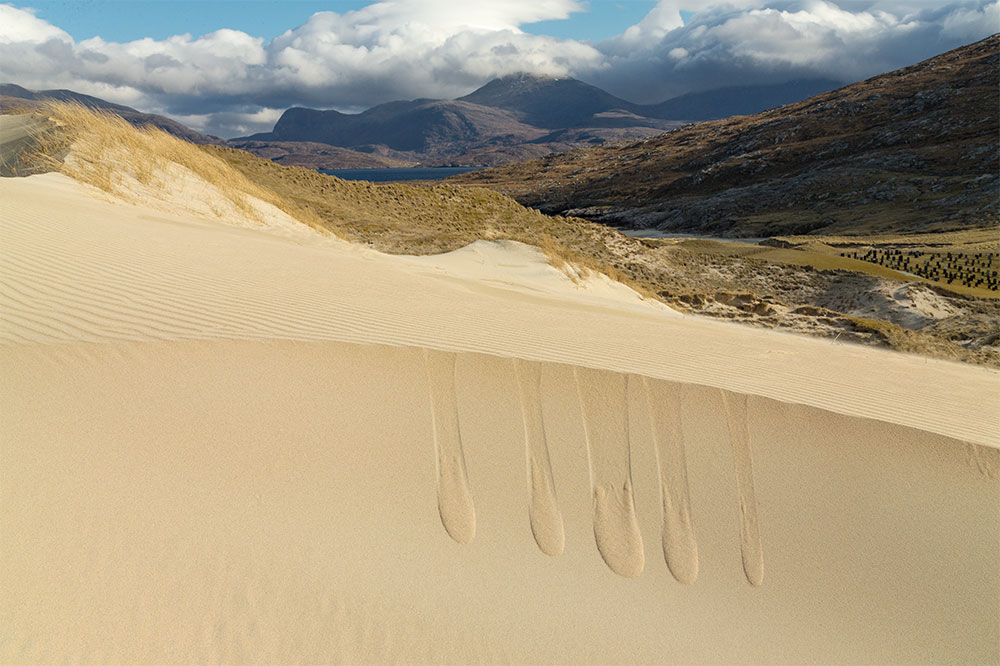 |
|||||||||
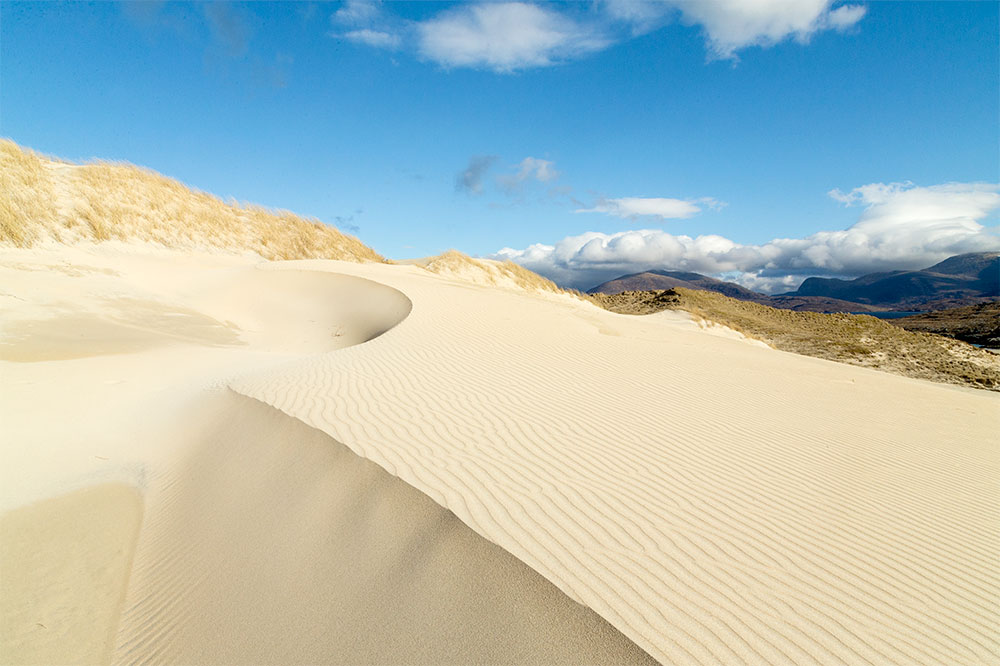 |
|||||||||
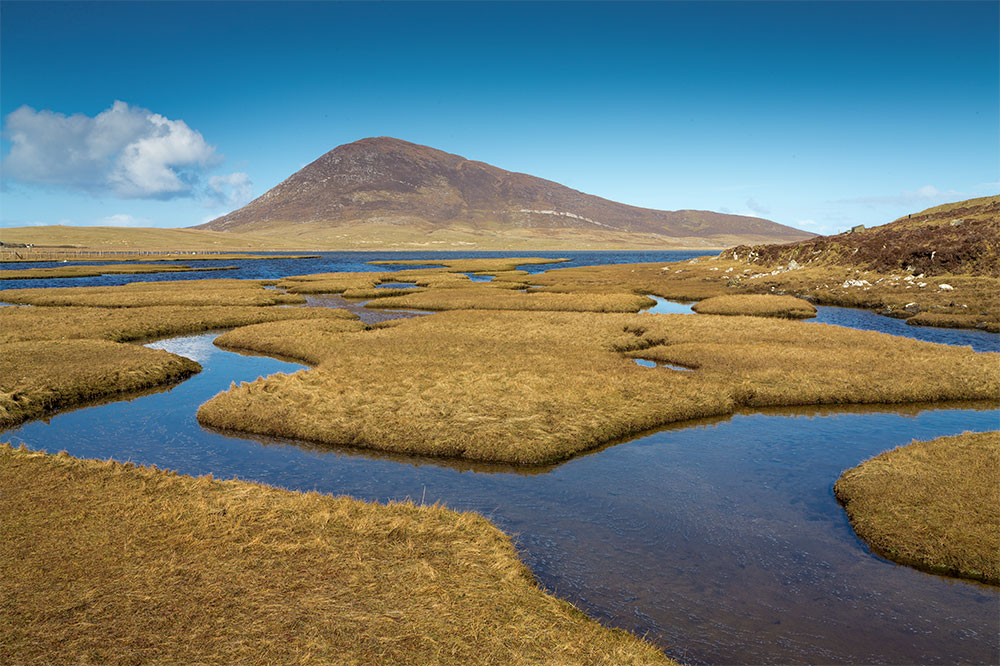 |
|||||||||
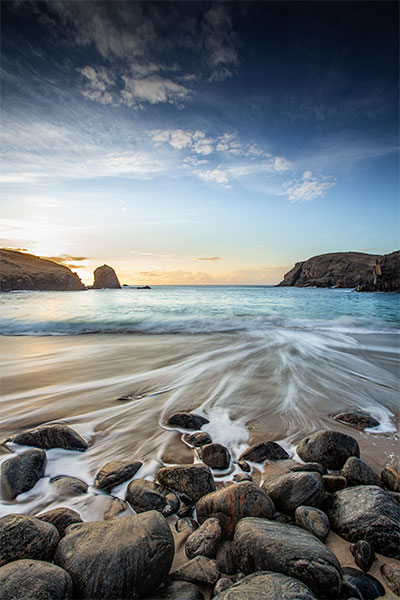 |
|||||||||
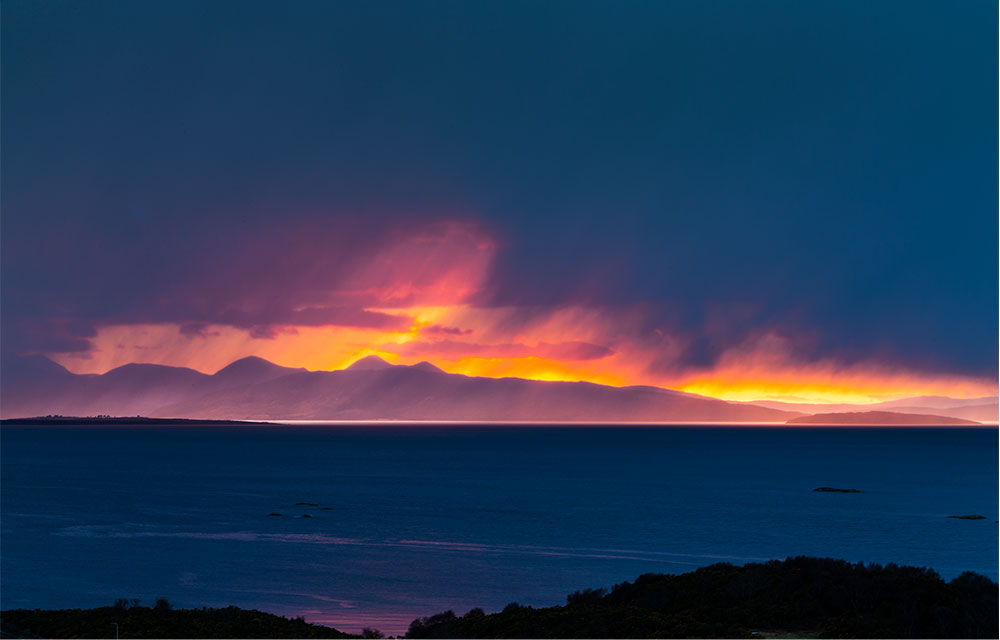 |
|||||||||
| Finishing off with a sunset over the island of Raasay | |||||||||
|
|
|||||||||
| Monday 9th April | |||||||||
| Greetings Cards For Hebrides Cruises | |||||||||
|
The summer is fast approaching (although it would not appear to be approaching with the current ongoing wet and cold weather that seems to not want to give up it's winter feel and pass into a lovely warm spring!!) As with the previous few years, I am really looking forward to spending some time working as a guide on "Elizabeth G", which is one of the superb boats owned and operated by Hebrides Cruises. This season I am pleased to report that I was asked to guide on several trips that are spread between late April and the end of October, these voyages range from four day visits exploring the Small Isles through to ten day trips of a more expedition nature which visit more remote islands including St. Kilda. As always, I am looking forward to returning to one of the best British areas for both wildlife and scenery. The staff training days are fast approaching. Looks like my thermals may be the order of the day. Last year, Hebrides Cruises used my Puffin greetings card as part of their welcome pack to guests. This year they will be using my Common Dolphin Greetings card as well as the Puffin card, and I have recently collected special "Hebrides Cruises editions" of these cards my local printers ready for the season ahead. |
|||||||||
 |
|||||||||
 |
|||||||||
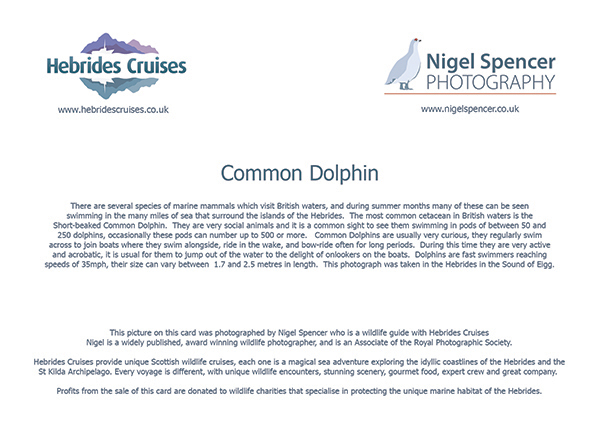 |
|||||||||
 |
|||||||||
|
|
|||||||||
| Friday 16th March | |||||||||
| Common Cuckoo Images In BBC Countryfile Magazine | |||||||||
|
Several weeks ago, I was contacted by BBC Countryfile magazine regarding the possible use of some of my images of Common Cuckoo in their magazine. I sent them some images to review and I am pleased to report that they have chosen to use three of my images to illustrate a feature on the common cuckoo which will appear in the May 2018 magazine. They also used one of my images in the April 2018 magazine as a preview to the article in the May magazine. |
|||||||||
 |
|||||||||
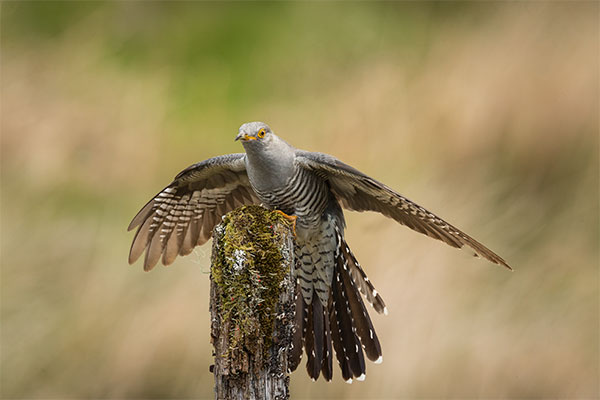 |
|||||||||
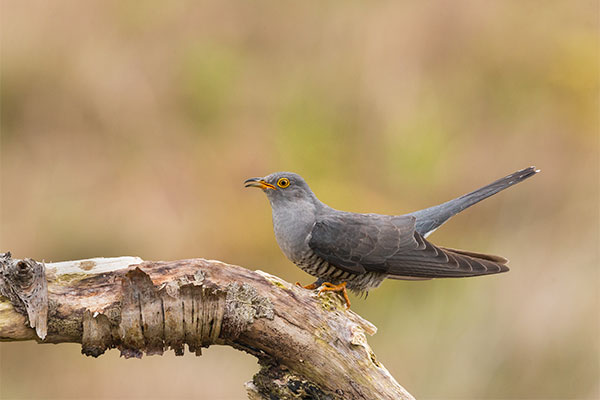 |
|||||||||
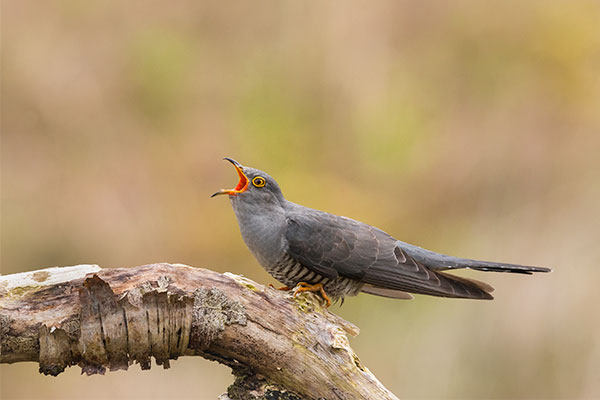 |
|||||||||
|
|
|||||||||
| Saturday 10th March | |||||||||
| Wild Crocus | |||||||||
|
There are some plants that are obviously wild, and there are some flowers that are clearly cultivated or garden species. But somewhere in between, there are some that could be classed as either, flowers that appear to be naturalised and growing wild. Indeed, I am not sure exactly what is classified as a wildflower, and as such, I don't often photograph garden species or naturalised species such as Cyclamen, daffodils, or Crocus. In some ways, this is a shame because in my opinion some of the early spring flowers offer some great colour and can look really great when the light is good. I have photographed snowdrops on a regular basis, and I guess these fit into the same viewpoint, could be wild, cultivated, or naturalised. A few days ago, I was out with my camera at a site in South Northamptonshire that I have visited a few times recently looking for early spring flowers to photograph and came across lots of Crocus and couldn't resist pointing my camera at them. |
|||||||||
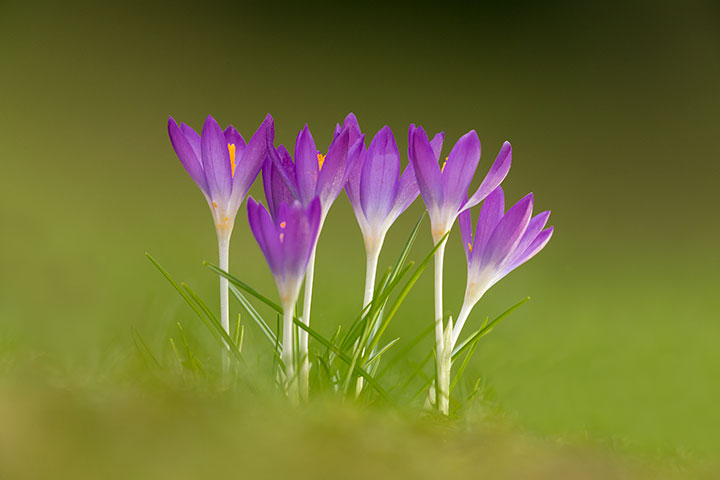 |
|||||||||
|
|
|||||||||
| Monday 5th March | |||||||||
| Looking To Improve Your Photography? | |||||||||
|
I was recently asked to run a session at a photographic study day entitled "Inspiring Photography", the event was held last week in Benson in Oxfordshire. After discussing the requirements with the organiser, I put together a bespoke talk and then ran a two hour session on wildlife photography looking at a wide range of topics. My session covered lots of items including equipment, composition, backgrounds, exposure (and exposure compensation). The topics covered were wide and diverse including the use of a tripod, how to create a "clean background" the effects of aperture, shutter speed, and ISO. We looked at shooting angles, the size of the subject in the frame, how to create something different. As you would expect the usual items such as appropriate depth of field were also reviewed as part of the day. |
|||||||||
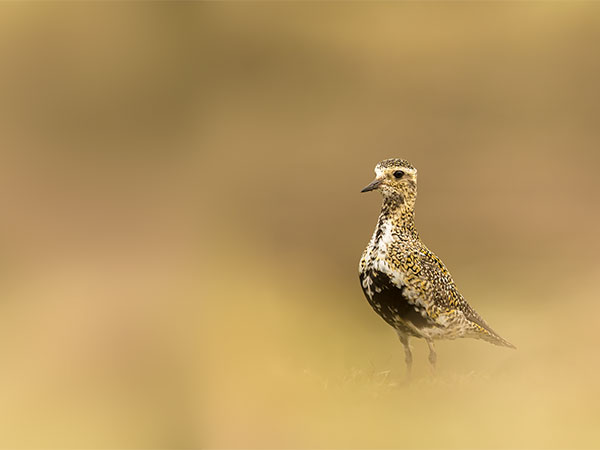 |
|||||||||
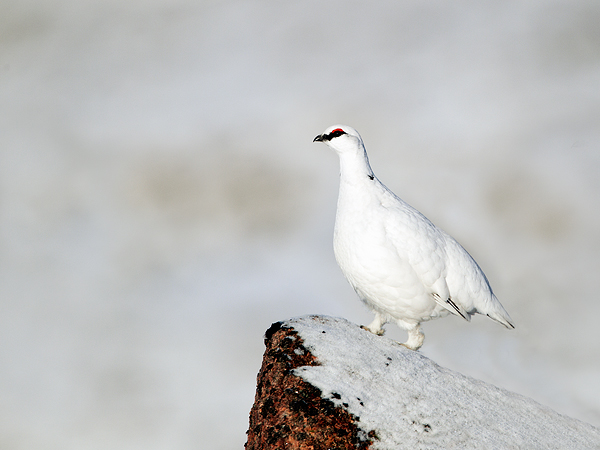 |
|||||||||
|
Amongst many of my ideas to improve photography, I discussed was the use of projects. Your photography will benefit from choosing a subject and then keep returning to this subject looking for different ideas and viewpoints while each time looking to get better results and images than previous visits. You will also build up a pleasing portfolio of images that will show you the improvement. From a personal point of view, I have several long term projects, and I discussed my project of photographing all of the British Butterfly species. |
|||||||||
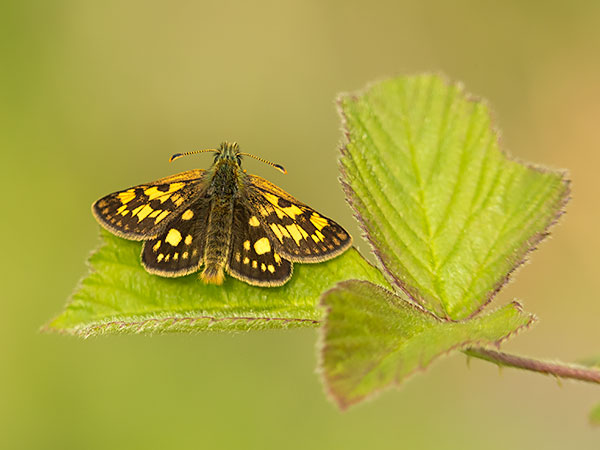 |
|||||||||
| It is also good to find a short term project, focus your efforts on seeing what can be achieved in a few days or a few weeks. I discussed my current 2018 project of photographing Snowdrops. | |||||||||
 |
|||||||||
| My brief was to discuss various aspects of photography (not just wildlife) therefore we looked at other photographic areas including landscape photography. This looked at more photographic principles, ideas, hints, and tips. We looked at lens choice, composition, and the part that light plays in any image. We also discussed how to photograph specific subjects such as the northern lights, and using your camera in cold weather. | |||||||||
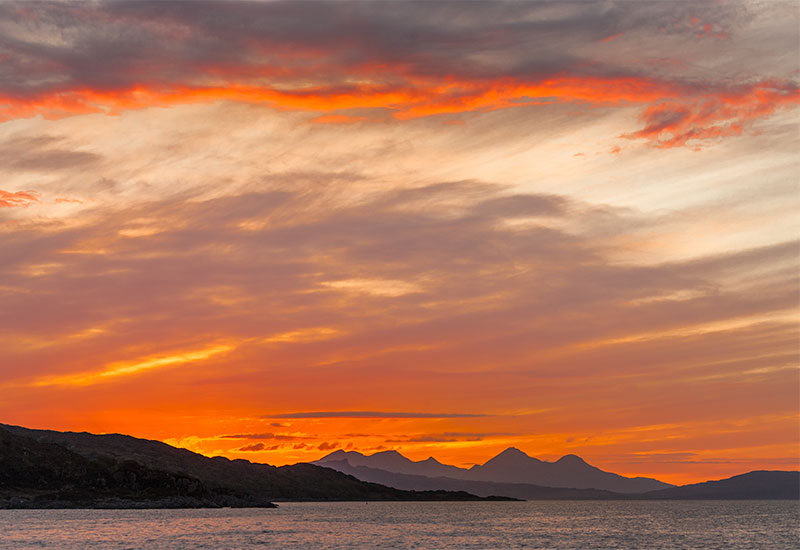 |
|||||||||
|
The organiser was expecting over 100 people to attend, but the event was hampered by the recent snowy weather and about 80 people were in attendance. My session was well received, it generated plenty of questions, and I really enjoyed the day. When I returned home, I received several emails from participants including: "Many thanks, Nigel for such an interesting talk and presentation today at Benson. Amazing wildlife photos. Having just completed a course on "Understanding your DSLR Camera", so many of the points you talked about made so much more sense to me! Best wishes, Jean" The organiser wrote: "Thank You again for today. The comments I have been receiving have been very appreciative so Thank you again for your efforts." I am also pleased to report that they have booked me to do another workshop in May.
|
|||||||||
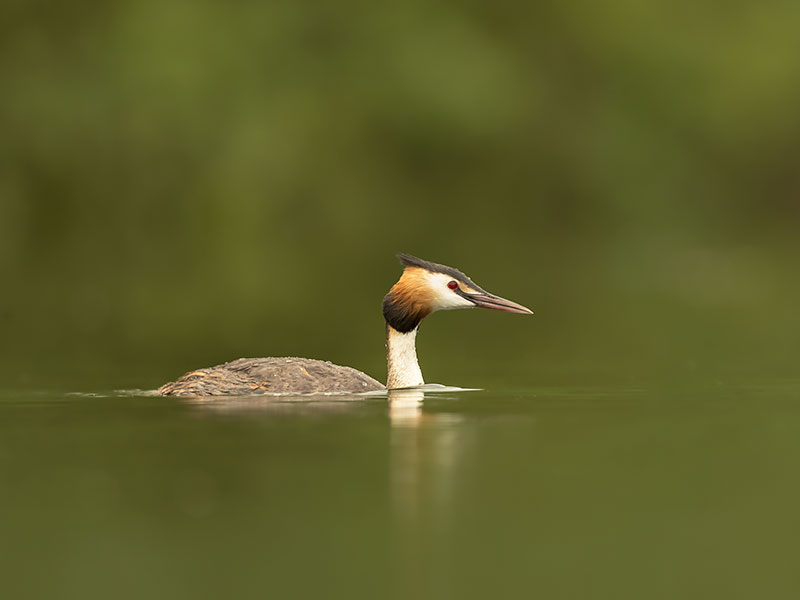 |
|||||||||
|
Over the years, I have run a selection of photographic workshops, and each year I do good numbers of talks, but until my visit to Benson, I have not had a specific talk aimed at "improving your photography". over the past weeks, I put a lot of work into producing the information and the images for this study day and am obviously really pleased with the feedback and to have received an invite back to run another workshop in a few months time.
As a result, I have added this talk into my collection of talks that I offer to organisations.
As you would expect, there will be plenty of time for questions at all of these talks irrespective of the length of talk booked. Indeed I run "question and answers" at all of my talks.
If any of the above is of interest to your group or society, then please get in touch to discuss your requirements. |
|||||||||
|
|
|||||||||
| Friday 23rd Feb | |||||||||
| One Of The Finest Early Flowers - The Snowdrop | |||||||||
| Many people, including myself, look forward to one of the first signs of regrowth each year, which is the emergence of snowdrops. They are truly a great sight, and during the long winter months when there are no flowers in our gardens, woods, or flower meadows, it is can feel like there is quite a wait for these to emerge. Then all of a sudden, these lovely small delicate white flowers arrive by magic out of the cold ground. No one can fail to like them, indeed, to see a single flower is a lovely sight. But the real treat is the pleasure of seeing thousands (if not millions) of snowdrops carpeting the ground as far as the eye can see. | |||||||||
|
Snowdrops are not the easiest of flowers to photograph, and for many years, I have wanted to spend more time photographing them. This year, I have made the effort, I have visited several sites to see the snowdrops and I try to photograph a wide variety of images that show a range of views ranging from a single flower head through to very large impressive snowdrop carpets covering the ground. Over the past month, I have visited about half a dozen sites across five counties with my camera. As you would expect, some days have been more productive than others, but there has been one thing in common throughout all of my 2018 snowdrop days, they have all been really enjoyable. I am pleased to report, that they have also resulted in many images, and after a few more hours on the computer, a small selection of snowdrops from these visits have been added to this blog post below. |
|||||||||
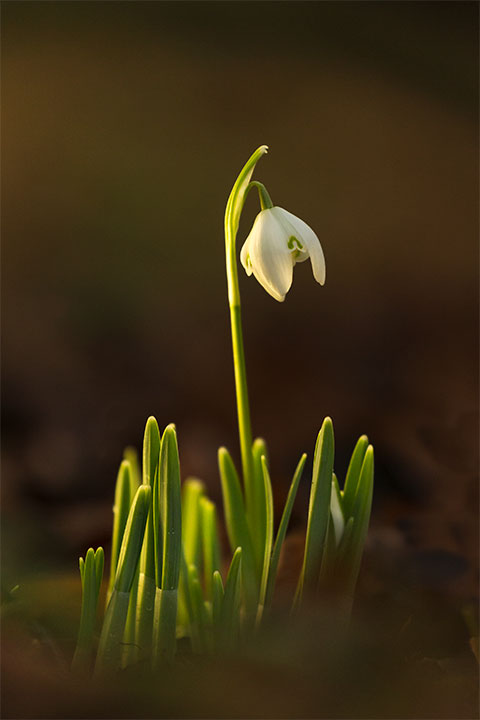 |
|||||||||
-59O1977.jpg) |
|||||||||
---59O1799.jpg) |
|||||||||
|
The sites that I have visited have been very varied, and have included national Trust gardens, open woodlands, and private houses that open to the public with "snowdrop days". Some have had over 100 different varieties of snowdrop that have been nicely labeled, whilst others have had very large carpets of just a few species. All these have been wildflowers, and they have offered me different photographic challenges. It can be quite hard photographing small snowdrops on a cold frosty day when the temperature is below zero. This is not helped by sitting on the cold ground trying to keep warm in some very cold wind. The wind is also a major factor with the results, as it can be tricky getting reasonable images when the small flower heads are being blown about in the wind. But, I guess it is all part of the fun!!! Previously, I was aware that there were several different species of snowdrop but did not realise just how many there were along with the different markings and colour variations. Some sites have offered snowdrops for sale, the prices have generally been a few pounds for some of the common species. But some of the rare collectors' species have been quite a bit more. Indeed there are several species that sell for several hundred pounds each. Over recent visits, I have tried to photograph several different species as part of this mini winter project. At the moment, it is is quite cold, and the weather forecasts indicate that the next few weeks will see a continuation of this cold spell. This means that there are still plenty of snowdrops about at the moment, and during early March, I will certainly be spending a bit more time photographing a few more snowdrop species as time allows. My aim is to widen my portfolio further with images of snowdrop carpets, interesting clumps, and single flowers. Hopefully, a few more different viewpoints, species, and sites will be added I predict that by the end of 2018, I will be looking forward to and planning some more snowdrop photography in early 2019. |
|||||||||
---59O1790.jpg) |
|||||||||
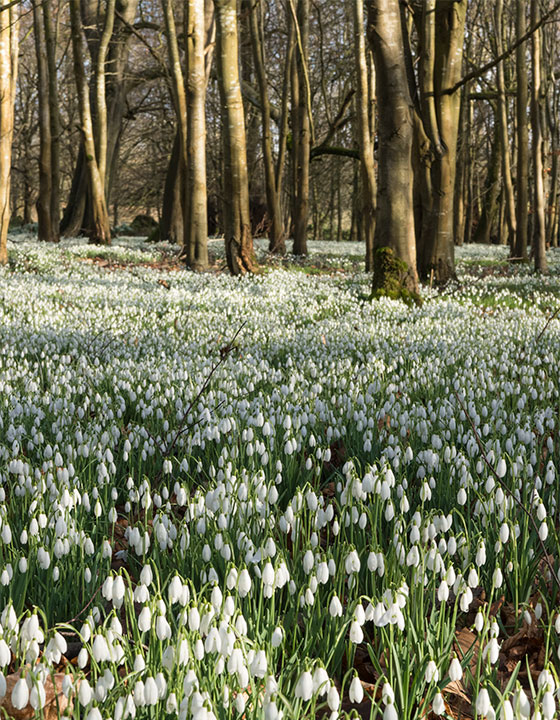 |
|||||||||
 |
|||||||||
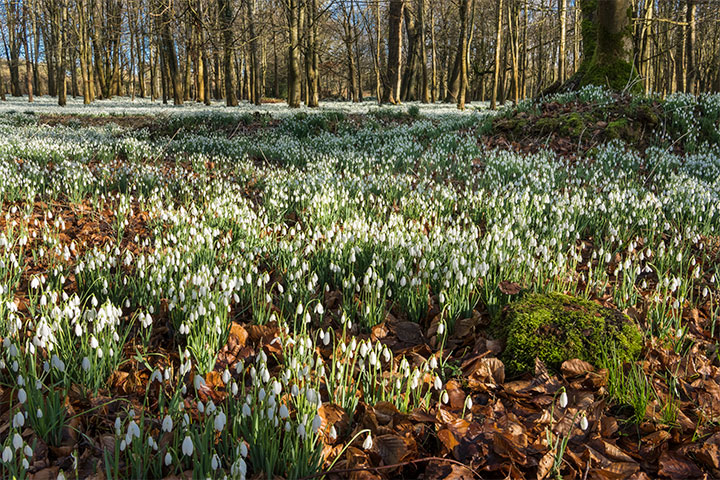 |
|||||||||
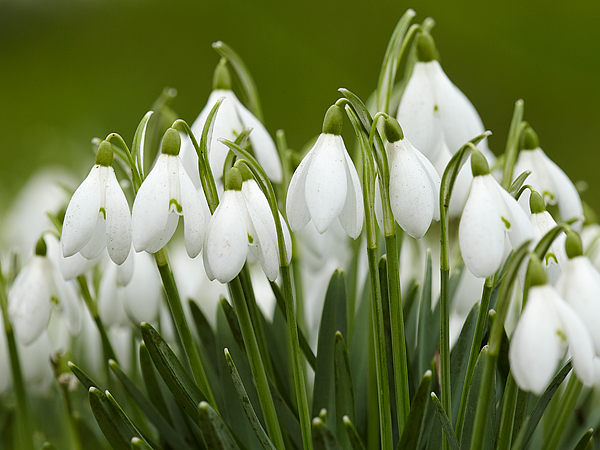 |
|||||||||
|
As some of the regular readers of my blog know, I run a few photography workshops. Over the next few years, I am now in the position to offer a wider variety of these workshops, along with more venues and more target species. One of the workshops which I already offer is summer macro photography, but photographing snowdrops has been great fun, so I have decided to add "Snowdrop Photography" to the workshops that I now offer. These are one day workshops in a lovely woodland setting with many thousands of snowdrops awaiting vsitors. I have chosen a central location which is close to good road networks, the site is close to the Northamptonshire and Oxfordshire border. The woodlands are ideal for photography, it has good car parking, easy paths, toilets, it even has a small cafe (allthough this is not always open every day). Later this year, I will be adding some specific dates for 2019 to this website. But in the meantime, if anyone would like to photograph Snowdrops over the next couple of weeks, then please contact me to discuss. For those that dont already have my contact details, I can be contacted using the "Contact Nigel" page to the left of this blog. |
|||||||||
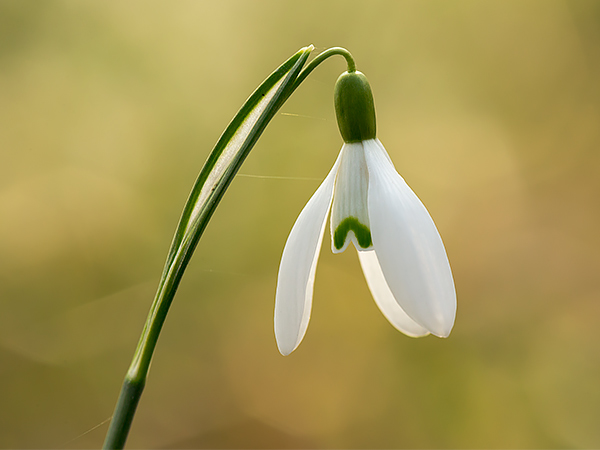 |
|||||||||
---59O2187.jpg) |
|||||||||
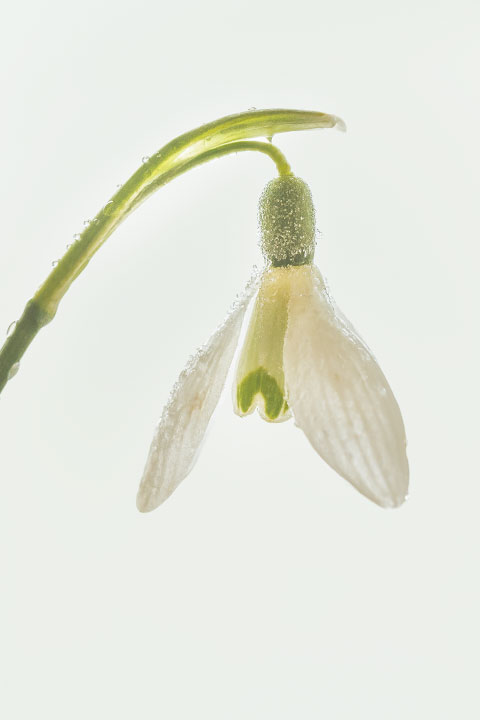 |
|||||||||
|
|
|||||||||
| Monday 8th January | |||||||||
| Gear Reviews | |||||||||
|
I am pleased to report that another of my ongoing photographic gear reviews has been published in the January 2018 edition of the Royal Photographic Society Journal. My review was on one of Manfrottos larger camera bags, which I used during several trips to photograph Red deer back in October last year. The review is available to read in both the paper and digital copies of the RPS journal, but I am also making these available to readers of my blog. |
|||||||||
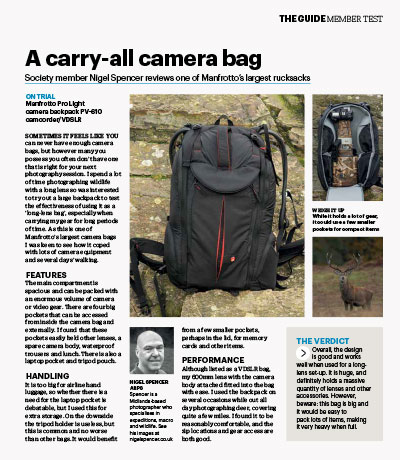 |
|||||||||
|
As, I am sure you will understand, it takes quite a while to get from the "idea stage" through to the published article. This is a colaboration with the editorial team, then the equipment manufacturers/suppliers. Then, the delivery, time to test, take images, write the review, submit the article, and wait for a slot for publication. This takes around 3 to 4 months, by which time I am in the process again as part of the next review. Thinking about all of this time and effort, and have decided it would be good to publish these reviews here on my website. Therefore in the near future, I will be adding a new section of gear reviews to this site. In addition, I will add a few extra reviews of my own (i.e. reviews written especially for this website, rather than in association for a journla, magazine, or supplier). To kick Start this section, I will add about half a dozen reviews which will be a mixture of those previously published for the Royal Photographic Society, and some written specifically for my website. Please Note: all new reviews for external organisations, will be submitted to the organisation and then published by them before they are added onto my website. In addition, I have been discussing the posibility of conducting some additional gear reviews with a leading wildlife photography company as they are looking to expand some of their media activity. Hopefully, this may progress into additional reviews for them as well as those listed above. Hopefully, it will also be of interest to you, what this space. |
|||||||||
|
|
|||||||||
| Monday 1st January | |||||||||
|
2017 = 1312 |
|||||||||
|
A year ago, I set myself the challenge to try and walk 1000 miles in 2017. At the time, I did not know how far I was walking each day and after hearing about this challenge on the radio, it sounded a good idea. It equates to an average of 2.8 miles per day. My phone has a feature that records how far i walk each day, and during 2017, the overall average per day gradually crept up at a reasonable rate. On 27th October 2017, I managed to complete the 1000 miles. By the end of the year, I had walked 1312 miles which is an average of 3.6 miles per day. It is certainly not record breaking, but I am pleased to have ended up with an average of over 100 miles per month. 2018, bring a different set of activities, but also quite a bit of walking. at this stage, i am not going to set myself a target amount of miles to walk. But as these are still recorded on my phone, i can easily look back at the data and work out some totals later in the year. But: today, has been a very lazy start to 2018, I had intended to get out and do some exercise, to walk 5 or 6 miles this afternoon. But after a lunchtime snack of some leftover Stilton, the rain got the better of me and I have only walked a short distance. |
|||||||||
|
|
|||||||||
|
The view from the summit of the Sgurr of Eigg, which is one of my favorite walks, as a result, I have completed this walk a few times over the years. During 2017, I lead several enjoyable walks while working as a guide in the Hebrides and we had great views and glorious warm weather. |
|||||||||
|
|
|||||||||
| Monday 1st January | |||||||||
| Another Year Dawns | |||||||||
|
Each year, I try and summarise a few thoughts in my blog about the year that has just about it is coming to an end, and then I start a new bog for the year ahead. (This can sometimes be a bit tricky, as the spell checker on the Website builder thinks that I am updating a "bog"), sometimes this can be hard work, I hate spelling at the best of times. I also try and post an image onto my Facebook page at least once per week, so please seek my page out and send me a friend request if you are interested in my photography. Each January, In the new blog, I share a few thoughts on what I am hoping to achieve, see, and photograph in the year ahead. Sometimes these are items that have already been planned, often for many months. But some are just ideas and thoughts of items that I wish to target. This year, my blog is continuing this same format, so if you would like to know a bit more about what I am hoping 2018 will bring for me, then read on. |
|||||||||
 |
|||||||||
| During 2017, I spent about 12 weeks in Scotland, this was a mixture of working as a guide in the Hebrides and personal activities of both photography and walking. I only sorted the dates for some of my personal photography and walking for the year ahead, but I have agreed the dates for my Hebrides guiding and 2018 will see somewhere around 12 - 15 weeks spent north of the border again. This is great news and is something, that I am really looking forward to. | |||||||||
